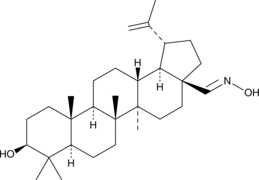Immunology/Inflammation
The immune and inflammation-related pathway including the Toll-like receptors pathway, the B cell receptor signaling pathway, the T cell receptor signaling pathway, etc.
Toll-like receptors (TLRs) play a central role in host cell recognition and responses to microbial pathogens. TLR4 initially recruits TIRAP and MyD88. MyD88 then recruits IRAKs, TRAF6, and the TAK1 complex, leading to early-stage activation of NF-κB and MAP kinases [1]. TLR4 is endocytosed and delivered to intracellular vesicles and forms a complex with TRAM and TRIF, which then recruits TRAF3 and the protein kinases TBK1 and IKKi. TBK1 and IKKi catalyze the phosphorylation of IRF3, leading to the expression of type I IFN [2].
BCR signaling is initiated through ligation of mIg under conditions that induce phosphorylation of the ITAMs in CD79, leading to the activation of Syk. Once Syk is activated, the BCR signal is transmitted via a series of proteins associated with the adaptor protein B-cell linker (Blnk, SLP-65). Blnk binds CD79a via non-ITAM tyrosines and is phosphorylated by Syk. Phospho-Blnk acts as a scaffold for the assembly of the other components, including Bruton’s tyrosine kinase (Btk), Vav 1, and phospholipase C-gamma 2 (PLCγ2) [3]. Following the assembly of the BCR-signalosome, GRB2 binds and activates the Ras-guanine exchange factor SOS, which in turn activates the small GTPase RAS. The original RAS signal is transmitted and amplified through the mitogen-activated protein kinase (MAPK) pathway, which including the serine/threonine-specific protein kinase RAF followed by MEK and extracellular signal related kinases ERK 1 and 2 [4]. After stimulation of BCR, CD19 is phosphorylated by Lyn. Phosphorylated CD19 activates PI3K by binding to the p85 subunit of PI3K and produce phosphatidylinositol-3,4,5-trisphosphate (PIP3) from PIP2, and PIP3 transmits signals downstream [5].
Central process of T cells responding to specific antigens is the binding of the T-cell receptor (TCR) to specific peptides bound to the major histocompatibility complex which expressed on antigen-presenting cells (APCs). Once TCR connected with its ligand, the ζ-chain–associated protein kinase 70 molecules (Zap-70) are recruited to the TCR-CD3 site and activated, resulting in an initiation of several signaling cascades. Once stimulation, Zap-70 forms complexes with several molecules including SLP-76; and a sequential protein kinase cascade is initiated, consisting of MAP kinase kinase kinase (MAP3K), MAP kinase kinase (MAPKK), and MAP kinase (MAPK) [6]. Two MAPK kinases, MKK4 and MKK7, have been reported to be the primary activators of JNK. MKK3, MKK4, and MKK6 are activators of P38 MAP kinase [7]. MAP kinase pathways are major pathways induced by TCR stimulation, and they play a key role in T-cell responses.
Phosphoinositide 3-kinase (PI3K) binds to the cytosolic domain of CD28, leading to conversion of PIP2 to PIP3, activation of PKB (Akt) and phosphoinositide-dependent kinase 1 (PDK1), and subsequent signaling transduction [8].
References
[1] Kawai T, Akira S. The role of pattern-recognition receptors in innate immunity: update on Toll-like receptors[J]. Nature immunology, 2010, 11(5): 373-384.
[2] Kawai T, Akira S. Toll-like receptors and their crosstalk with other innate receptors in infection and immunity[J]. Immunity, 2011, 34(5): 637-650.
[3] Packard T A, Cambier J C. B lymphocyte antigen receptor signaling: initiation, amplification, and regulation[J]. F1000Prime Rep, 2013, 5(40.10): 12703.
[4] Zhong Y, Byrd J C, Dubovsky J A. The B-cell receptor pathway: a critical component of healthy and malignant immune biology[C]//Seminars in hematology. WB Saunders, 2014, 51(3): 206-218.
[5] Baba Y, Matsumoto M, Kurosaki T. Calcium signaling in B cells: regulation of cytosolic Ca 2+ increase and its sensor molecules, STIM1 and STIM2[J]. Molecular immunology, 2014, 62(2): 339-343.
[6] Adachi K, Davis M M. T-cell receptor ligation induces distinct signaling pathways in naive vs. antigen-experienced T cells[J]. Proceedings of the National Academy of Sciences, 2011, 108(4): 1549-1554.
[7] Rincón M, Flavell R A, Davis R A. The Jnk and P38 MAP kinase signaling pathways in T cell–mediated immune responses[J]. Free Radical Biology and Medicine, 2000, 28(9): 1328-1337.
[8] Bashour K T, Gondarenko A, Chen H, et al. CD28 and CD3 have complementary roles in T-cell traction forces[J]. Proceedings of the National Academy of Sciences, 2014, 111(6): 2241-2246.
Targets for Immunology/Inflammation
- Cyclic GMP-AMP Synthase(1)
- Apoptosis(137)
- 5-Lipoxygenase(18)
- TLR(106)
- Papain(2)
- PGDS(1)
- PGE synthase(26)
- SIKs(10)
- IκB/IKK(83)
- AP-1(2)
- KEAP1-Nrf2(47)
- NOD1(1)
- NF-κB(265)
- Interleukin Related(129)
- 15-lipoxygenase(2)
- Others(10)
- Aryl Hydrocarbon Receptor(35)
- CD73(16)
- Complement System(46)
- Galectin(30)
- IFNAR(19)
- NO Synthase(78)
- NOD-like Receptor (NLR)(37)
- STING(84)
- Reactive Oxygen Species(434)
- FKBP(14)
- eNOS(4)
- iNOS(24)
- nNOS(21)
- Glutathione(37)
- Adaptive Immunity(144)
- Allergy(129)
- Arthritis(25)
- Autoimmunity(134)
- Gastric Disease(64)
- Immunosuppressants(27)
- Immunotherapeutics(3)
- Innate Immunity(411)
- Pulmonary Diseases(76)
- Reactive Nitrogen Species(43)
- Specialized Pro-Resolving Mediators(42)
- Reactive Sulfur Species(24)
Products for Immunology/Inflammation
- Cat.No. Product Name Information
-
GC35412
Asperulosidic Acid
Asperulosidic Acid (ASPA), a bioactive iridoid glycoside, is extracted from the herbs of Hedyotis diffusa Willd.
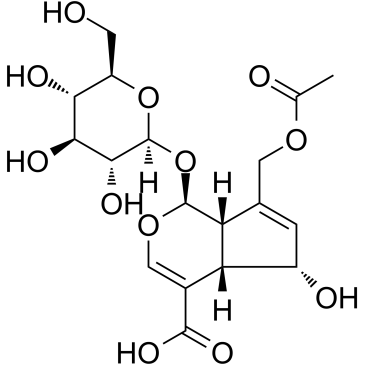
-
GC42860
Aspochalasin D
Aspochalasin D is a co-metabolite originally isolated from A.
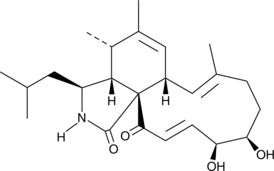
-
GC46886
Aspyrone
A fungal metabolite with diverse biological activities
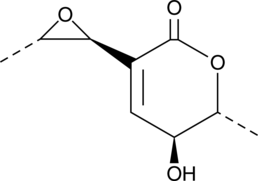
-
GC31350
Astaxanthin
Astaxanthin, the red dietary carotenoid, is an orally effective and potent antioxidant.
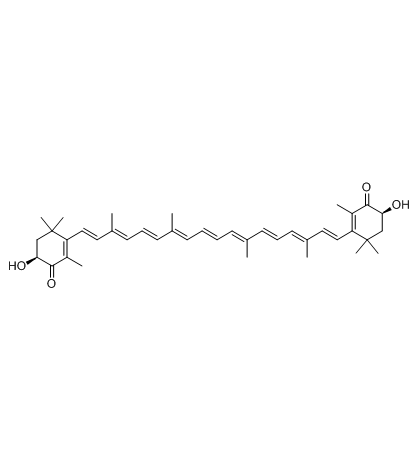
-
GC68702
Astegolimab
Astegolimab (MSTT 1041A; RG 6149) is a human IgG2 monoclonal antibody that can block IL-33 signaling by targeting the IL-33 receptor ST2. Astegolimab has potential for use in research on chronic obstructive pulmonary disease (COPD).
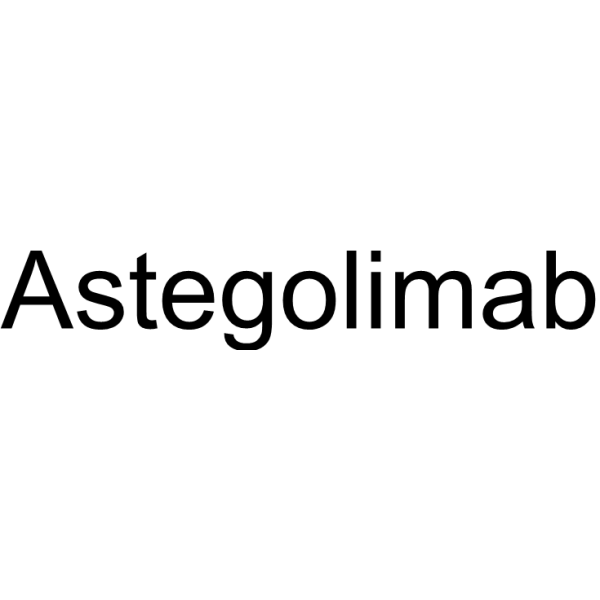
-
GC41640
Asterriquinol D dimethyl ether
Asterriquinol D dimethyl ether is a fungal metabolite that has been found in A.
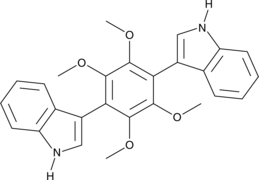
-
GN10415
Astilbin
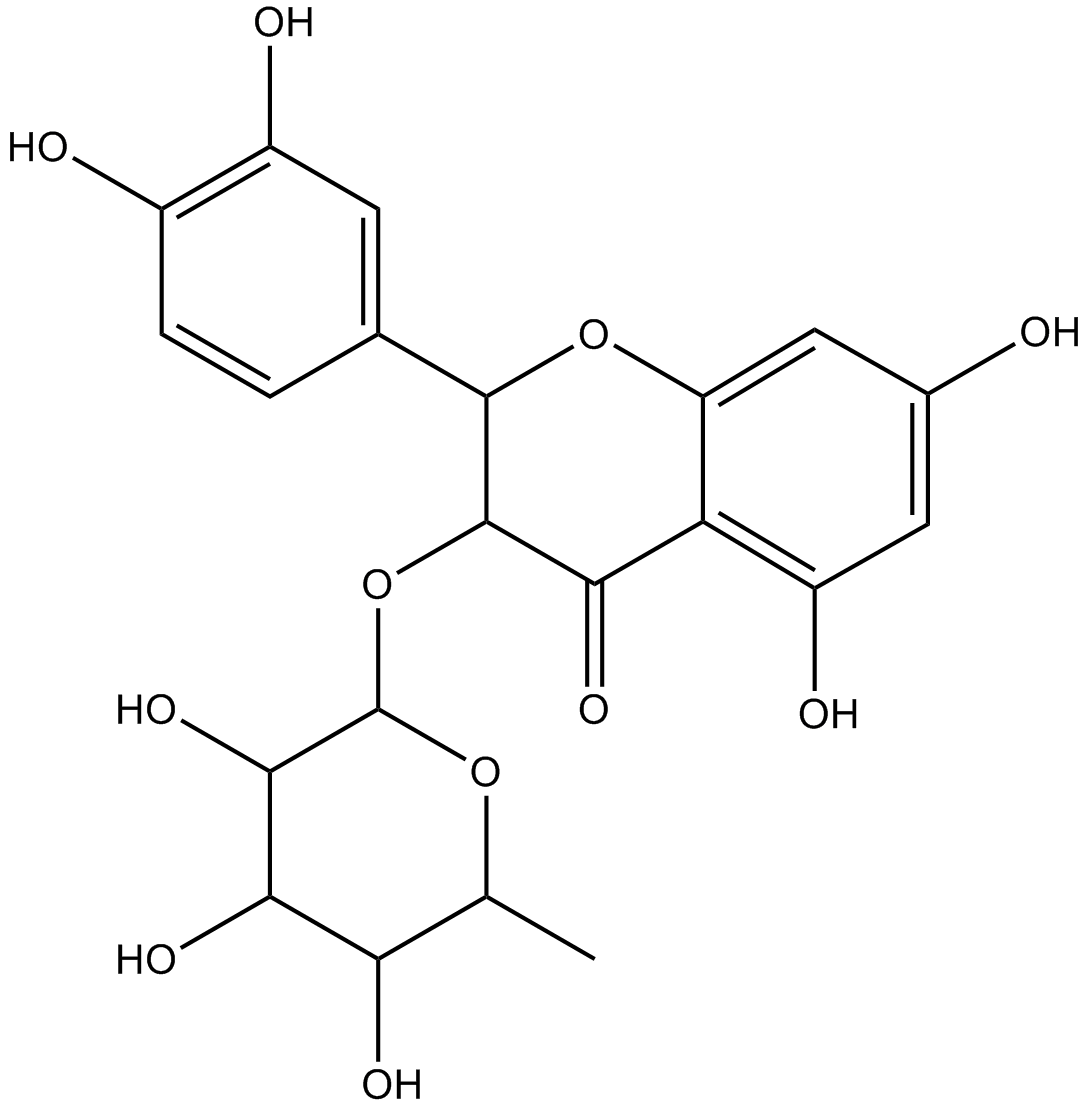
-
GC42863
Asukamycin
Asukamycin is polyketide isolated from the S.
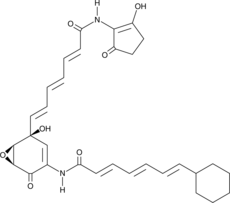
-
GC32457
Asymmetric dimethylarginine
An endogenous NOS inhibitor
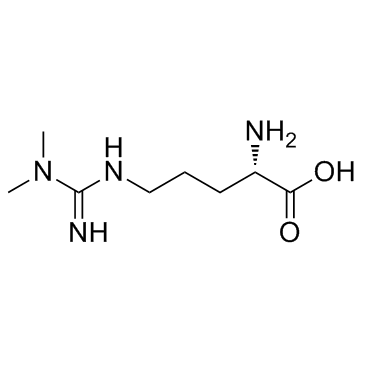
-
GC46091
Aszonapyrone A
A meroditerpene fungal metabolite with diverse biological activities
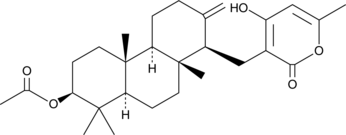
-
GC39554
AT2 receptor agonist C21
An AT2 receptor agonist
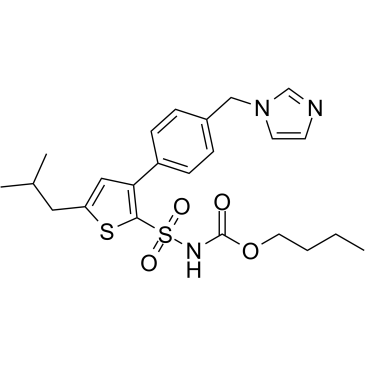
-
GC62334
AT791
AT791 is a potent and orally bioavailable TLR7 and TLR9 inhibitor.
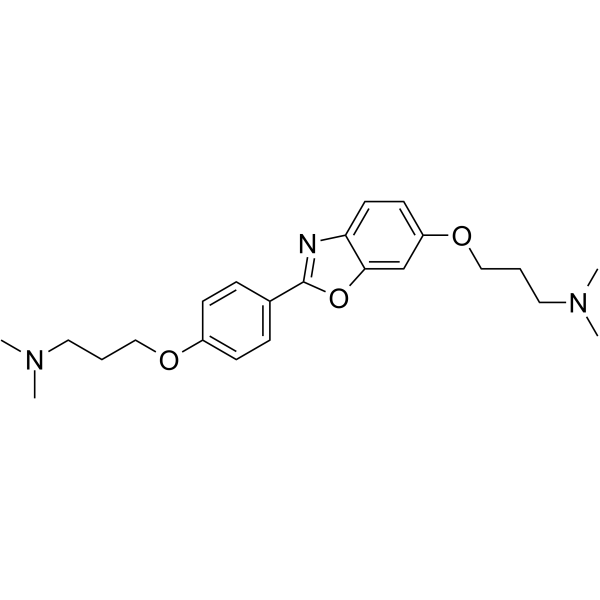
-
GC46887
Atazanavir-d6
An internal standard for the quantification of atazanavir
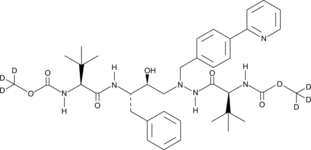
-
GC12537
ATB-337
ATB-337 is a hybrid molecule of an H2S donor and the NSAID diclofenac.
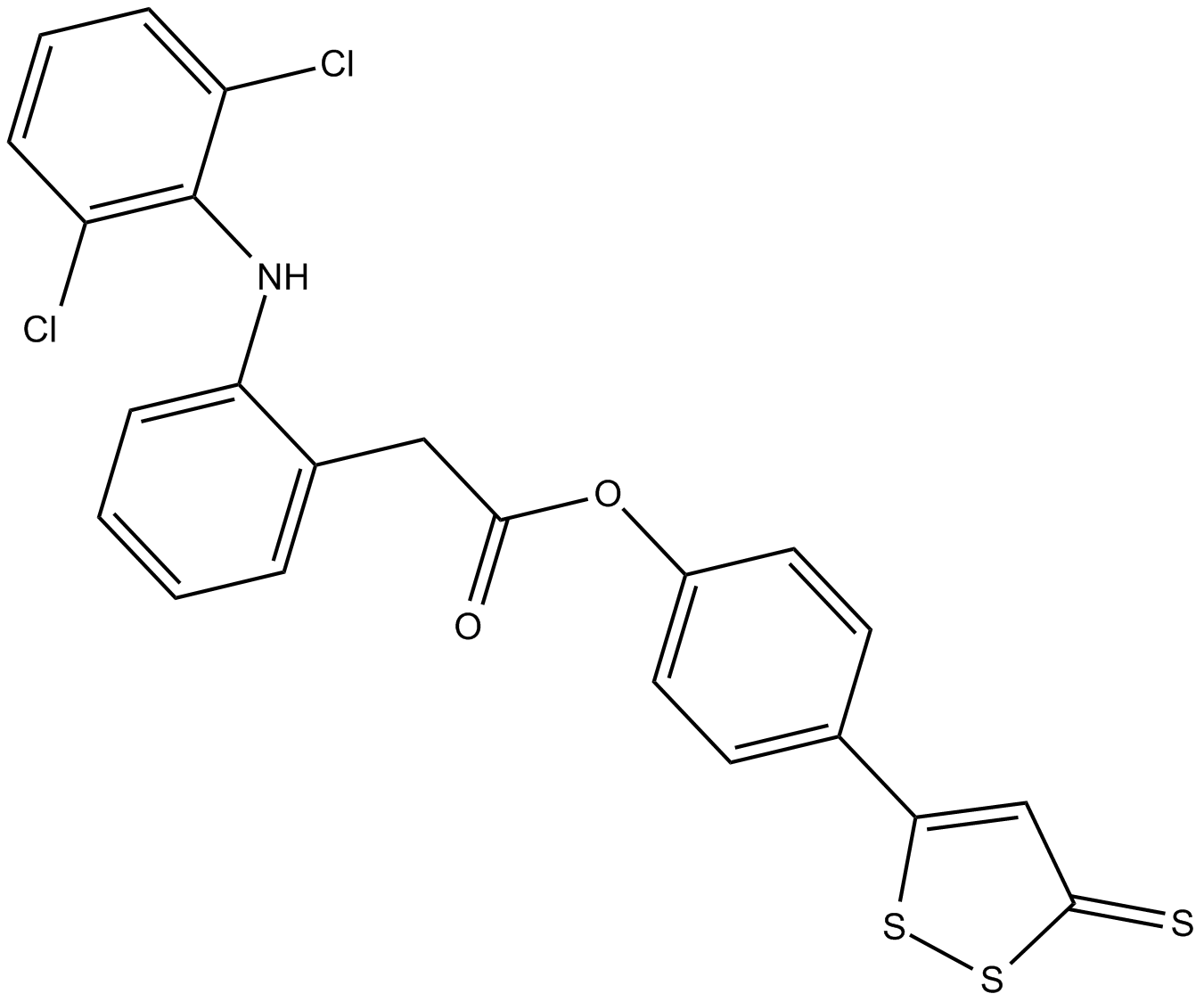
-
GC16245
ATB-343
hybrid molecule of an H2S donor and the NSAID indomethacin
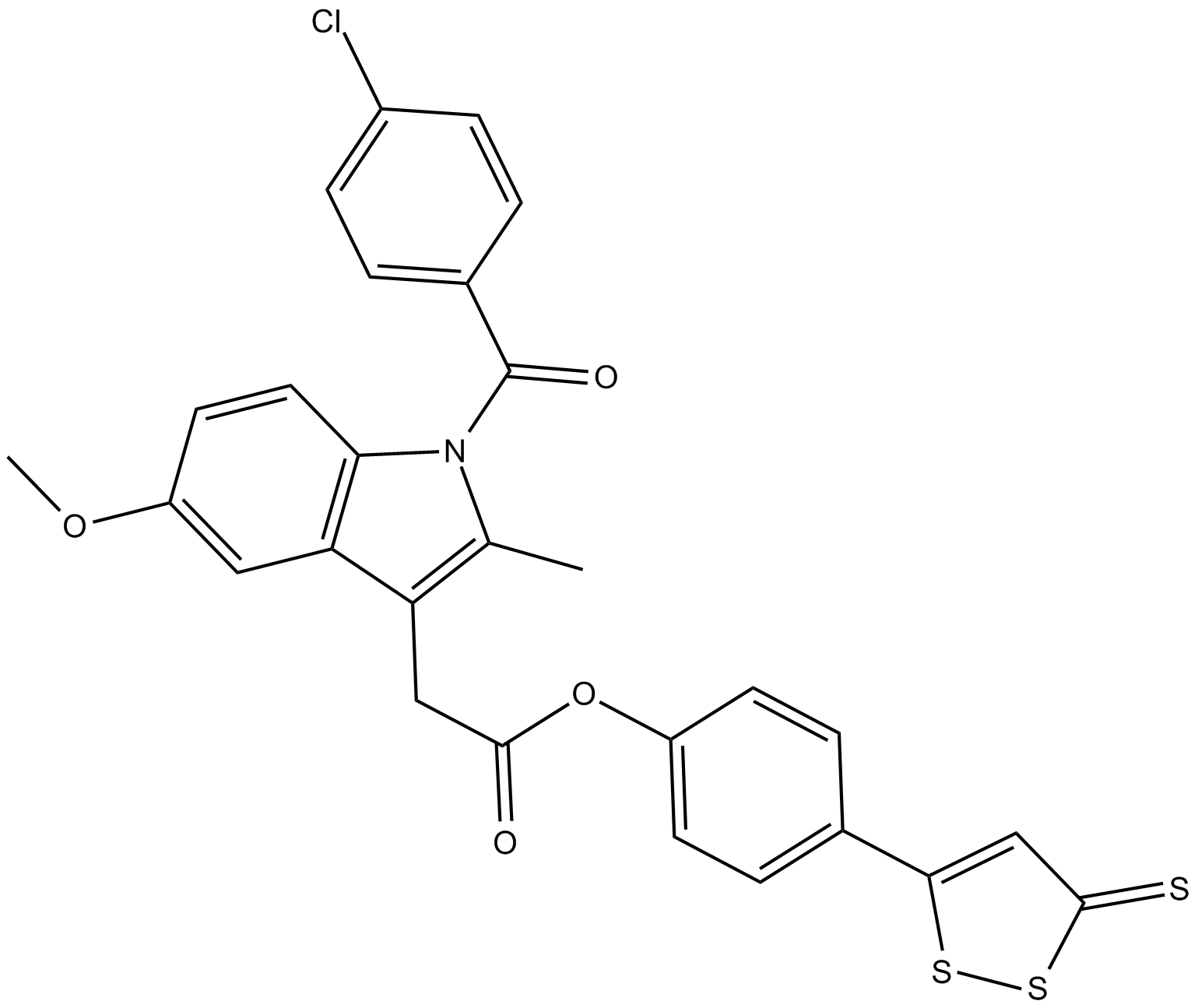
-
GC46892
ATRA-BA Hybrid
A prodrug form of all-trans retinoic acid and butyric acid

-
GN10627
Atractylenolide I
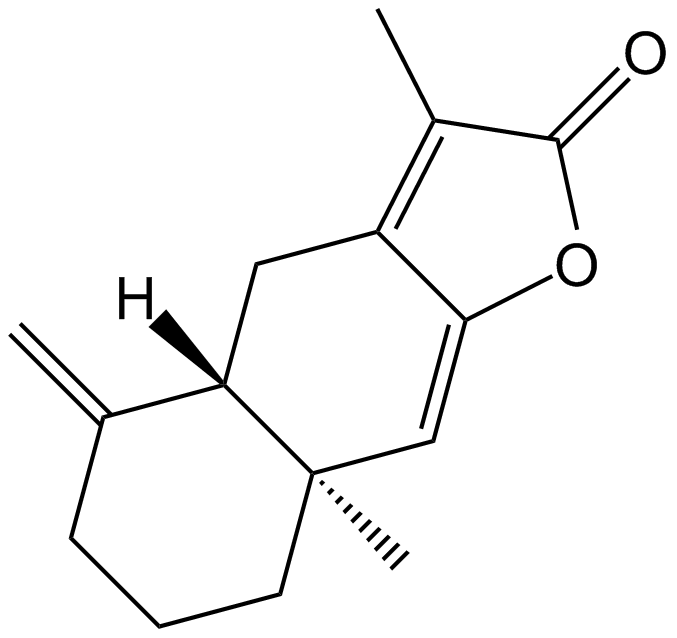
-
GC48925
Aureonitol
A fungal metabolite
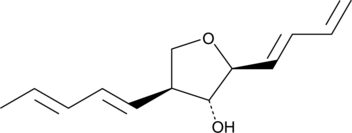
-
GC41490
Aureusimine B
Aureusimine B, also known as phevalin, is a natural pyrazinone produced by certain fungi and by Staphylococcus spp., including S.
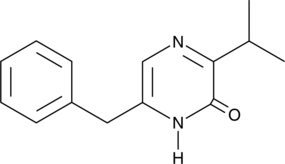
-
GC46895
Aurintricarboxylic Acid (ammonium salt)
A protein synthesis inhibitor with diverse biological activities
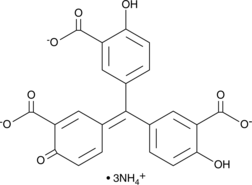
-
GC40005
Aurodox
Aurodox is a polyketide antibiotic originally isolated from S.

-
GC49646
Aurothioglucose (hydrate)
A TrxR inhibitor
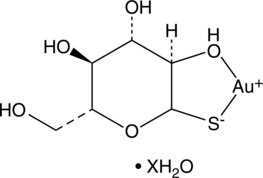
-
GC42877
AUY954
AUY954 is an orally bioavailable and selective agonist of the sphingosine-1-phosphate receptor 1 (S1P1; EC50 = 1.2 nM for stimulating GTPγS binding to S1P1 in CHO cells).

-
GC32486
AVE-3085
AVE-3085 is a potent endothelial nitric oxide synthase enhancer, used for cardiovascular disease treatment.
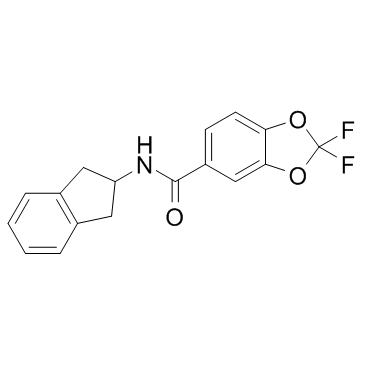
-
GC42880
Avenanthramide-C methyl ester
Avenanthramide-C methyl ester is an inhibitor of NF-κB activation that acts by blocking the phosphorylation of IKK and IκB (IC50 ~ 40 μM).
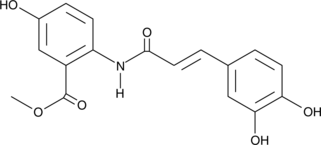
-
GC45388
Averantin

-
GC42881
Avermectin B1a aglycone
Avermectin B1a aglycone is an aglycone form of the anthelmintic and insecticide avermectin B1a.
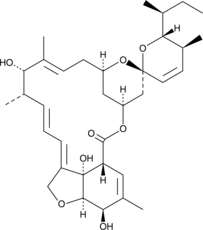
-
GC42882
Avermectin B1a monosaccharide
Avermectin B1a monosaccharide is a macrolide anthelmintic and monosaccharide form of avermectin B1a.
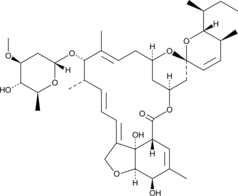
-
GC45984
Avilamycin A
An antibiotic

-
GC48511
Avrainvillamide
A fungal metabolite
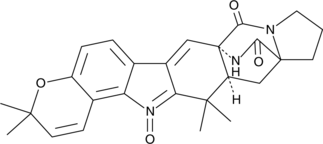
-
GC42885
AX 048
The group IVA phospholipase A2 (PLA2), known as calcium-dependent cytosolic PLA2 (cPLA2), selectively releases arachidonic acid from membrane phospholipids, playing a central role in initiating the synthesis of prostaglandins and leukotrienes.

-
GC35440
AX-024
AX-024 is an orally available, first-in-class inhibitor of the TCR-Nck interaction that selectively inhibits TCR-triggered T cell activation with an IC50 ~1 nM.
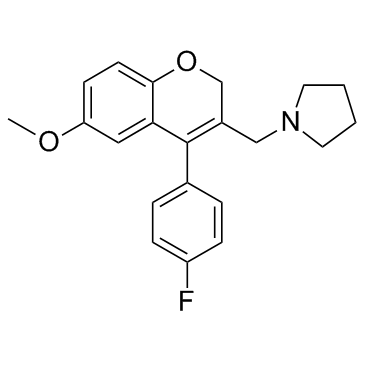
-
GC19046
AX-024 hydrochloride
AX-024 hydrochloride is an cytokine release inhibitor which can strongly inhibit the production of interleukin-6 (IL-6), tumor necrosis factor-α (TNFα), interferon-γ (IFN-γ), IL-10 and IL-17A.
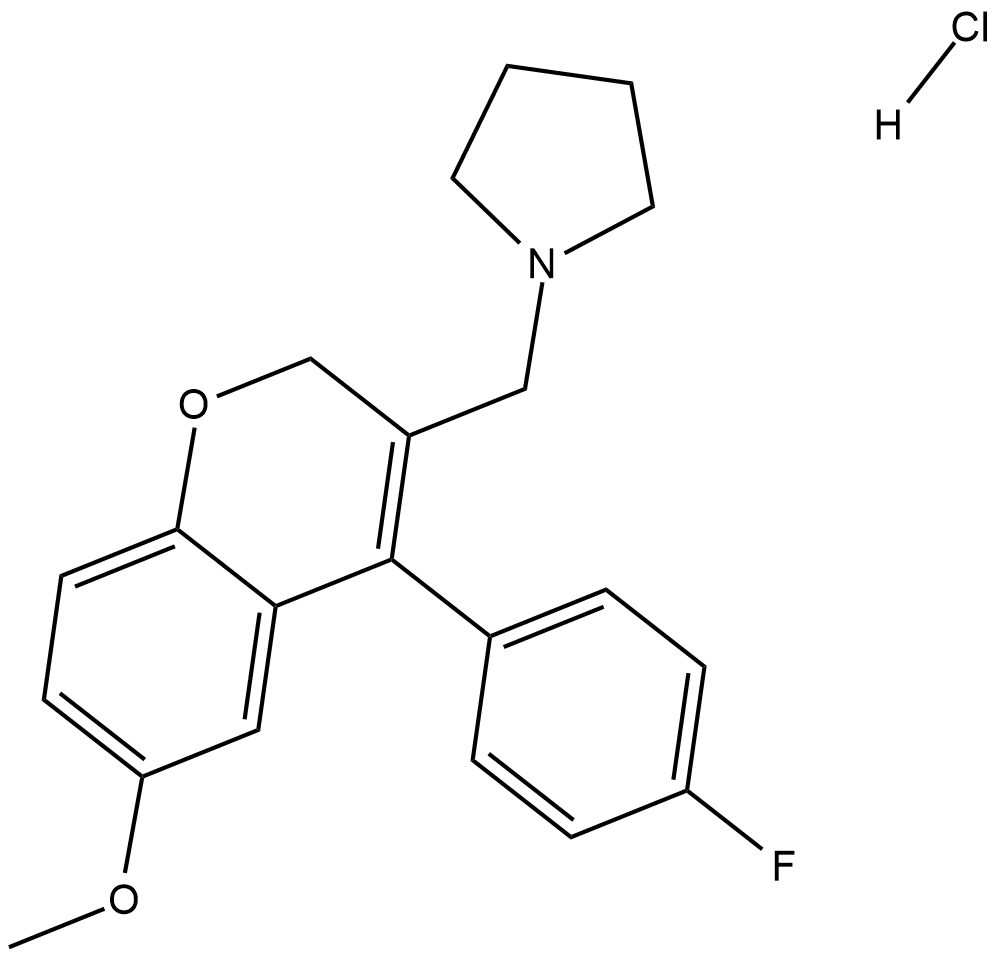
-
GC65283
AXC-715 trihydrochloride
AXC-715 (T785) trihydrochloride is a TLR7/TLR8 dual agonist, extracted from patent WO2020168017 A1.
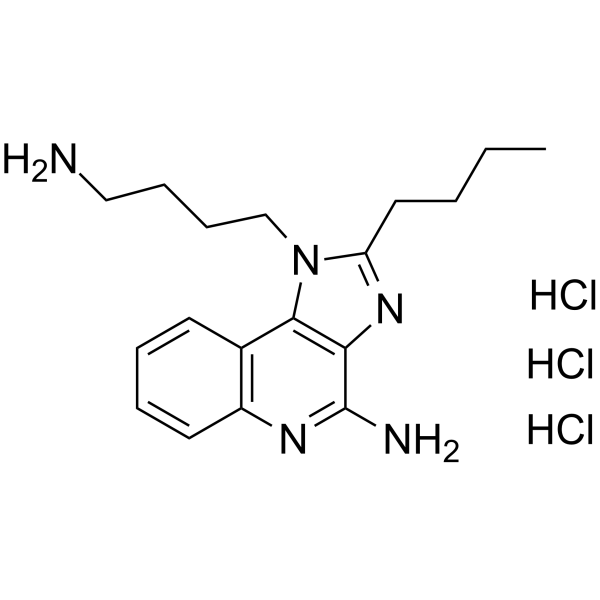
-
GC64938
AZD-7648
AZD-7648 is a potent, orally active, selective DNA-PK inhibitor with an IC50 of 0.6 nM. AZD-7648 induces apoptosis and shows antitumor activity.
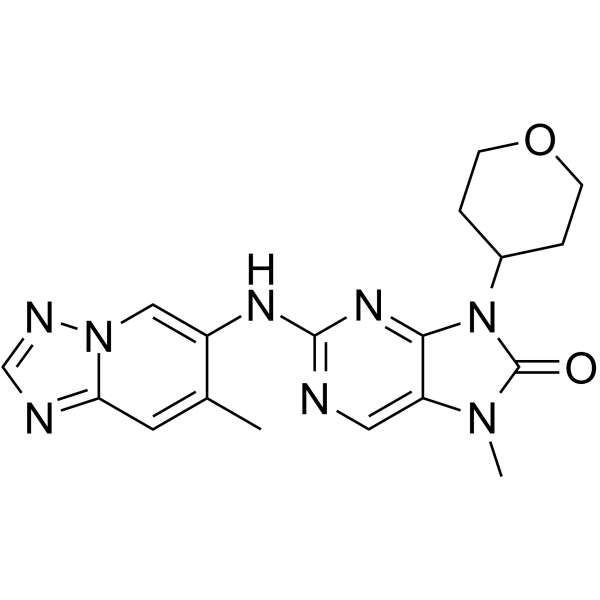
-
GC10135
AZD3264
IKK2 inhibitor
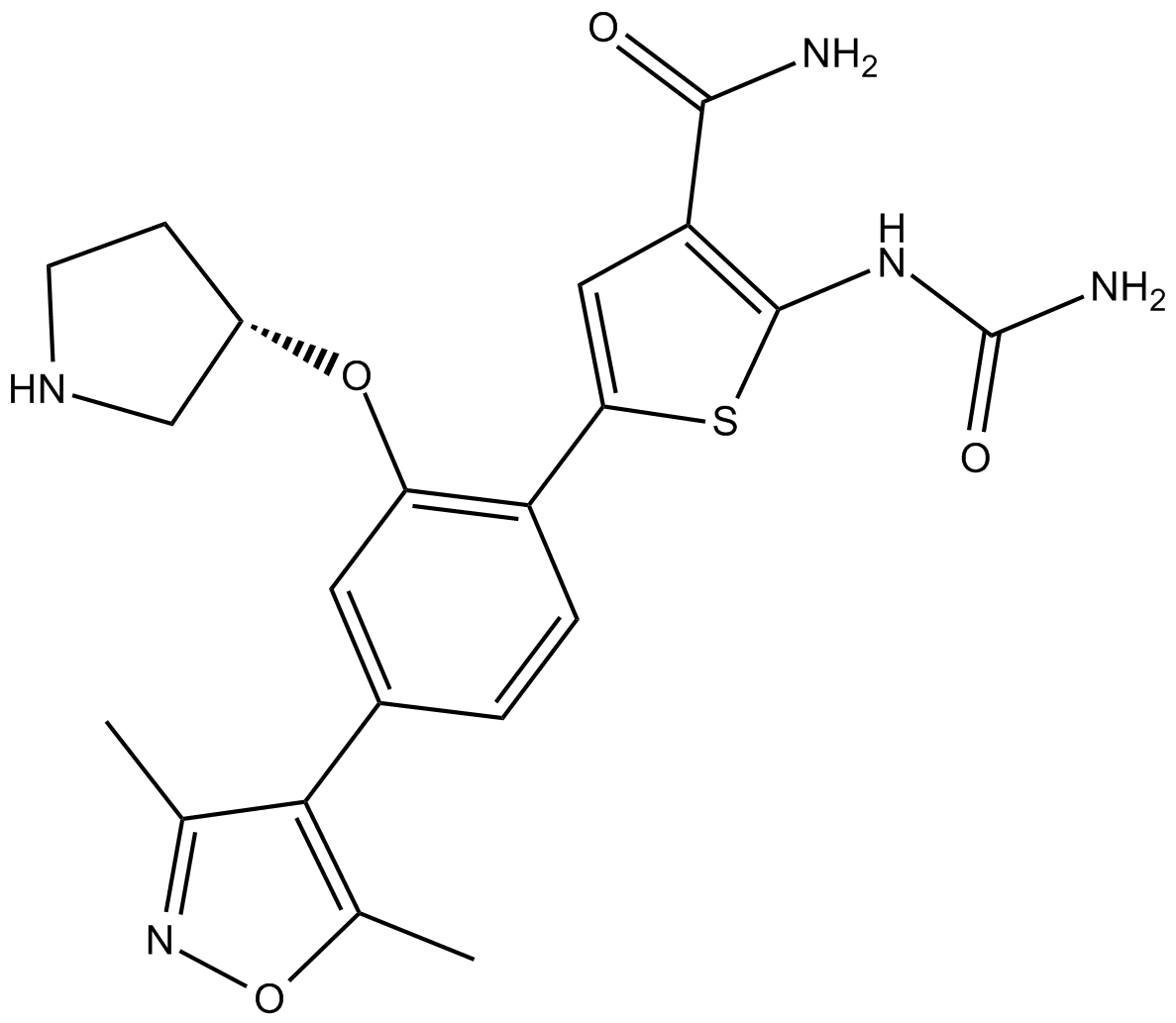
-
GC62488
AZD8848
AZD8848 is a selective toll-like receptor 7 (TLR7) antedrug agonist which is developed for the research of asthma and allergic rhinitis.
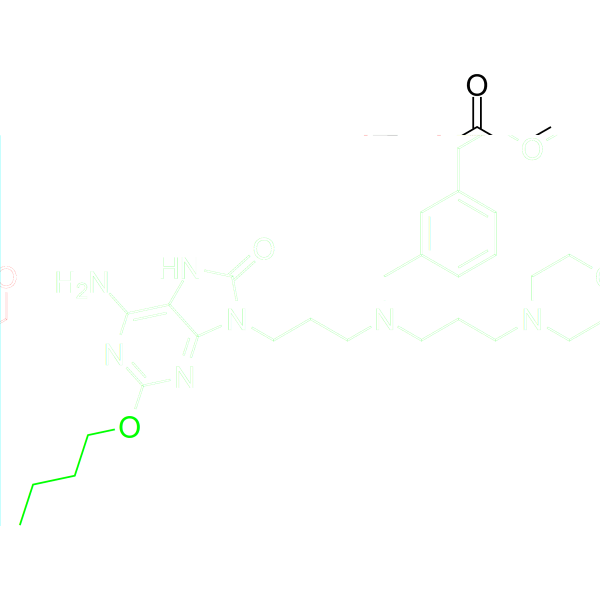
-
GC49057
Azelastine-13C-d3 (hydrochloride)
An internal standard for the quantification of azelastine
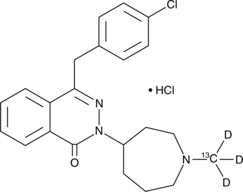
-
GC42891
azido-FTY720
FTY720 is a derivative of ISP-1 (myriocin), a fungal metabolite of the Chinese herb Iscaria sinclarii as well as a structural analog of sphingosine.

-
GC46903
Azithromycin-d3
An internal standard for the quantification of azithromycin
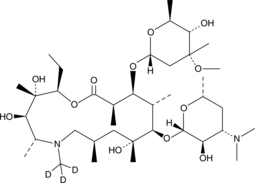
-
GC46904
Azoxystrobin
A broad-spectrum fungicide
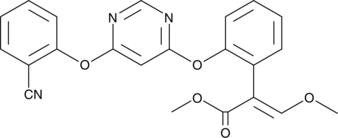
-
GC60616
AZT triphosphate
AZT triphosphate (3'-Azido-3'-deoxythymidine-5'-triphosphate) is a active triphosphate metabolite of Zidovudine (AZT).
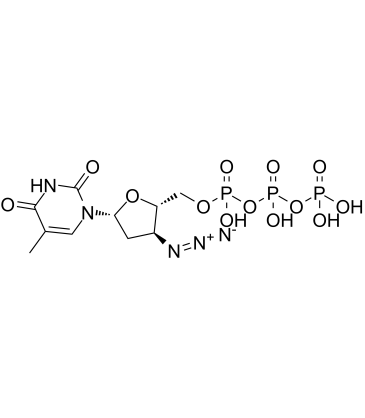
-
GC60617
AZT triphosphate TEA
AZT triphosphate TEA (3'-Azido-3'-deoxythymidine-5'-triphosphate TEA) is a active triphosphate metabolite of Zidovudine (AZT).
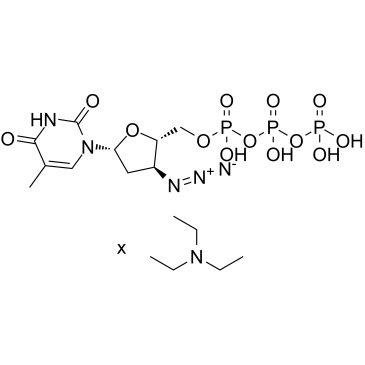
-
GC45795
Aztreonam-d6
An internal standard for the quantification of aztreonam
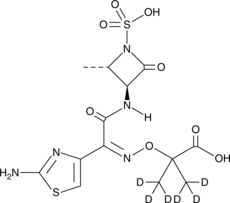
-
GC39280
B022
B022 is a potent and selective NF-κB-inducing kinase (NIK) inhibitor (Ki of 4.2 nM; IC50=15.1 nM).
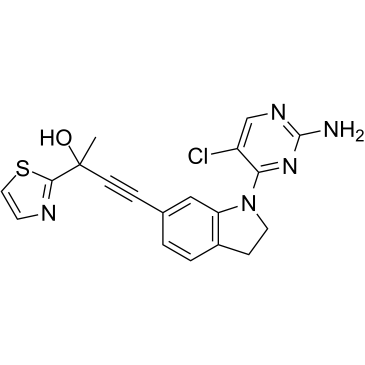
-
GC18580
B355252
A neuroprotective agent
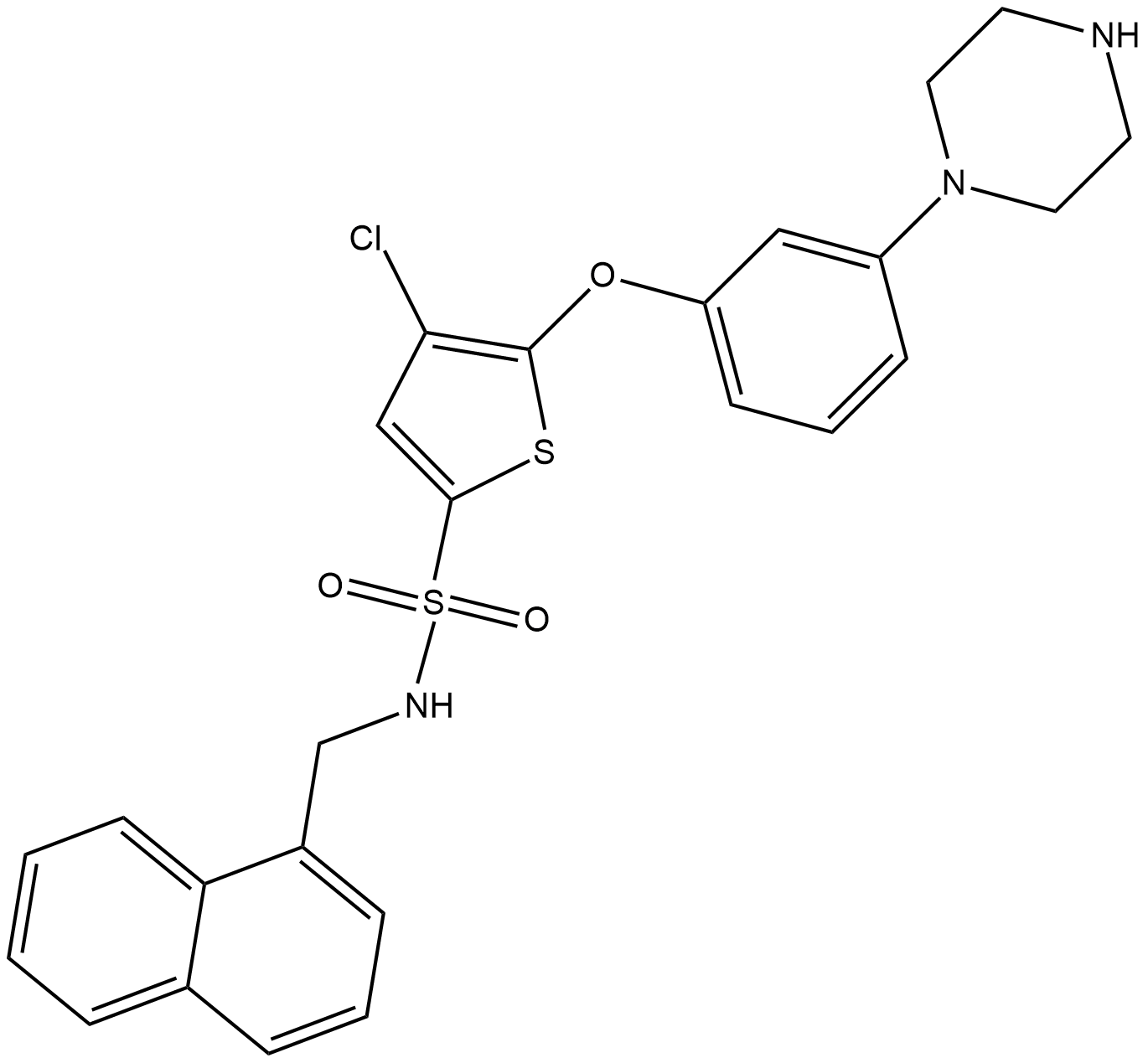
-
GC42895
Bacillosporin C
Bacillosporin C is an oxaphenalenone dimer originally isolated from T.
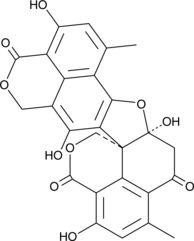
-
GC49793
Bacitracin A (technical grade)
A polypeptide antibiotic
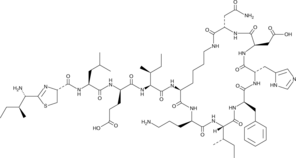
-
GC46905
Bacitracin Complex
A mixture of bacitracin polypeptides in complex with copper
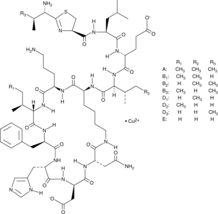
-
GC45938
Bacopaside X
A triterpenoid saponin
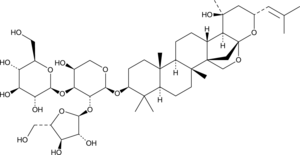
-
GC49302
Bactenecin (bovine) (trifluoroacetate salt)
A cationic peptide
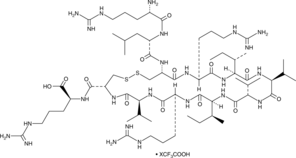
-
GN10018
Baicalin
A flavonoid with diverse biological activities
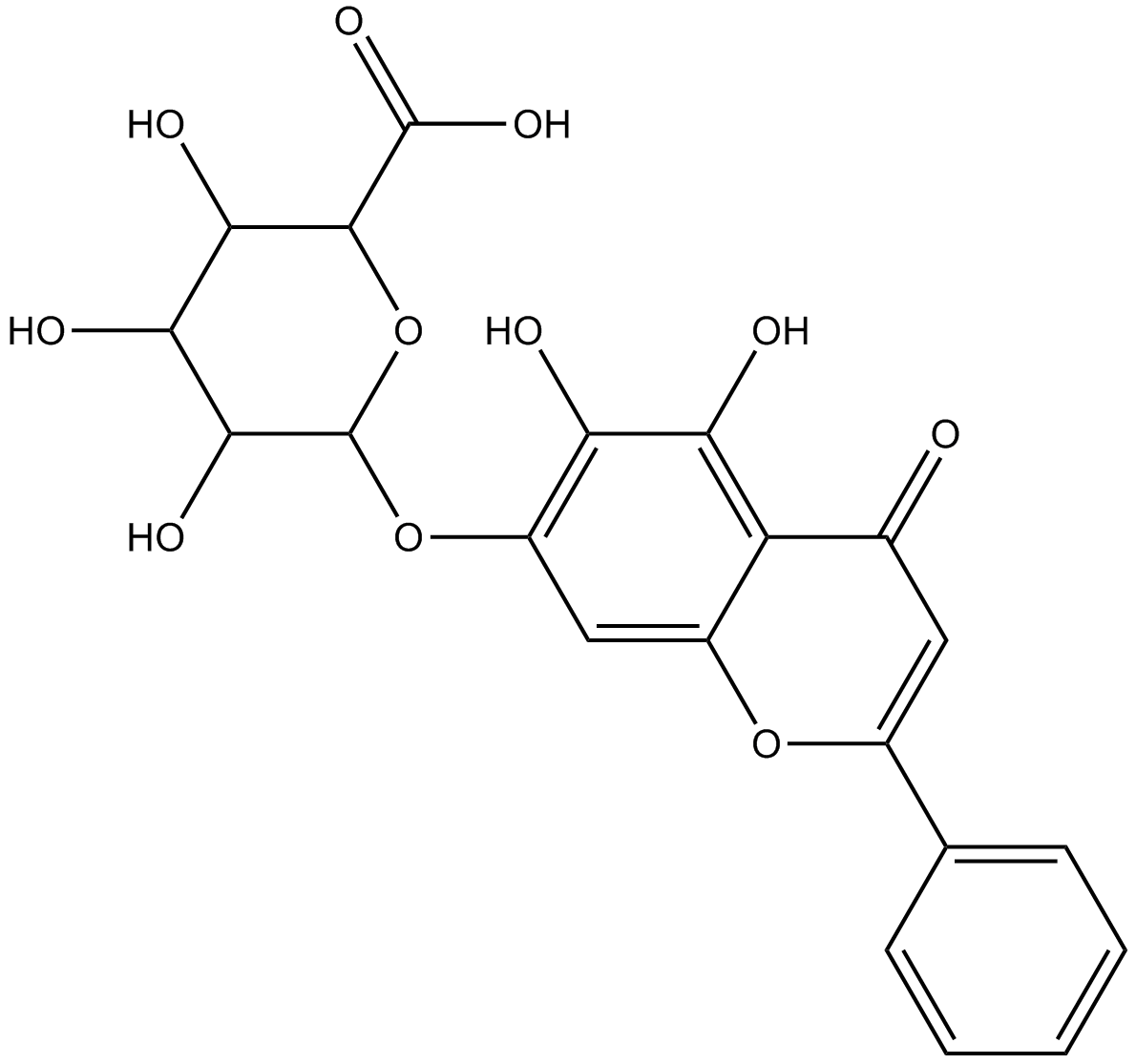
-
GC52344
Bak BH3 (72-87) (human) (trifluoroacetate salt)
A Bak-derived peptide

-
GC18126
Balsalazide
anti-inflammatory drug
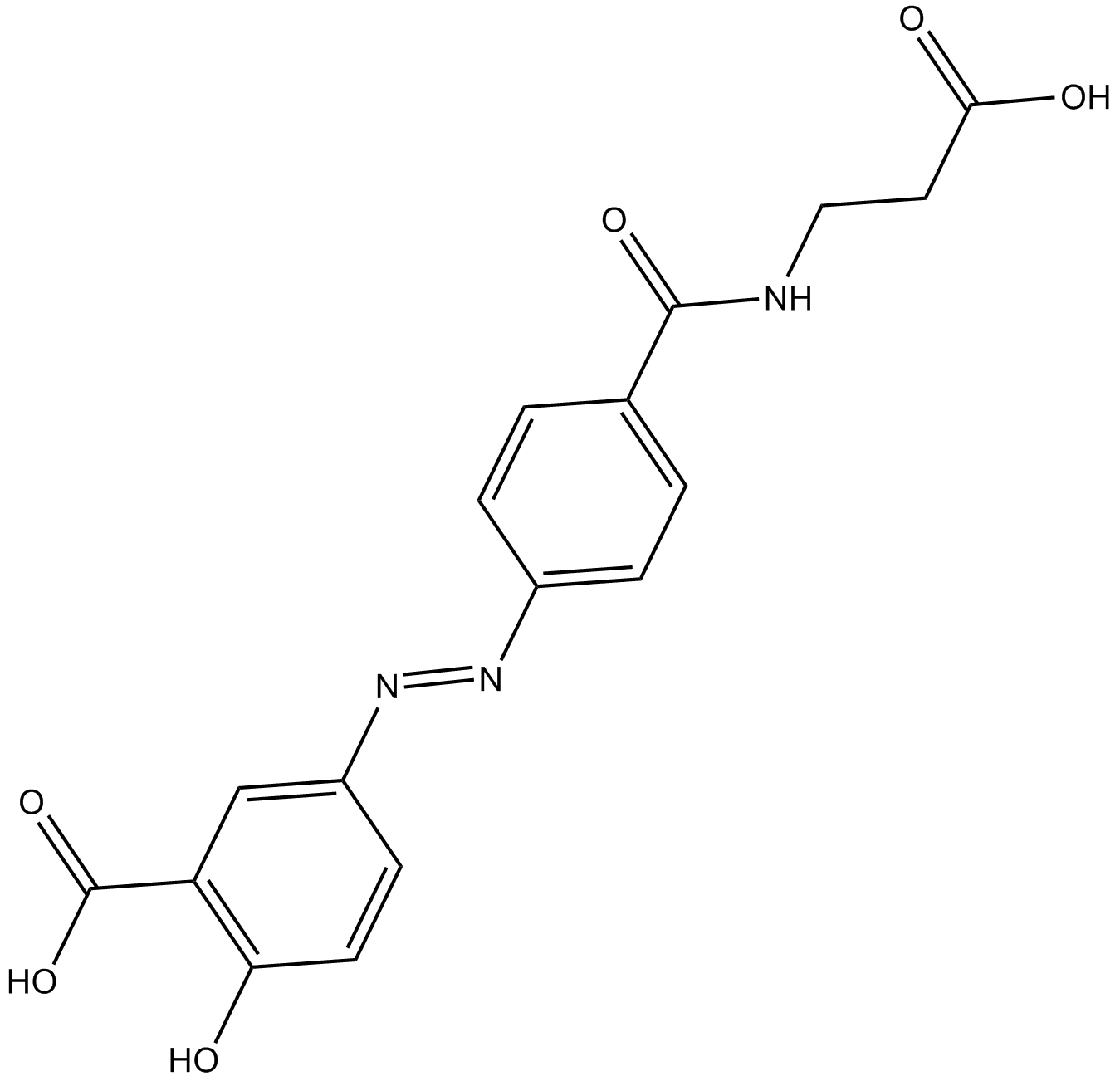
-
GC35466
Balsalazide sodium hydrate
Balsalazide sodium hydrate could suppress colitis-associated carcinogenesis through modulation of IL-6/STAT3 pathway.
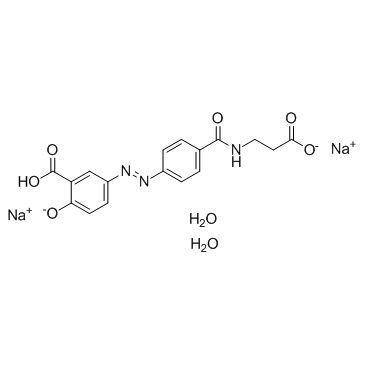
-
GC17574
BAPTA
calcium chelator
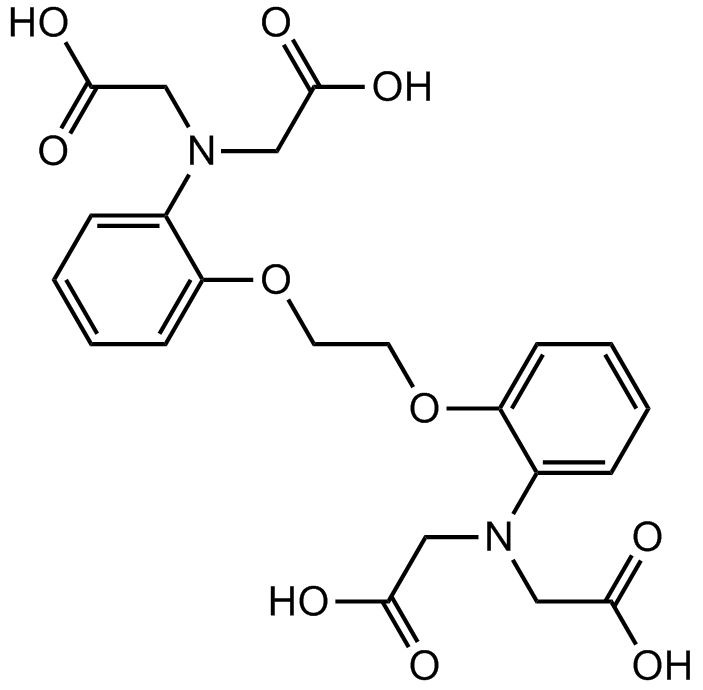
-
GC18313
BAR501 Impurity
BAR501 impurity is an impurity found in the preparation of BAR501 that acts as an agonist of the G protein-coupled bile acid-activated receptor (GP-BAR1).
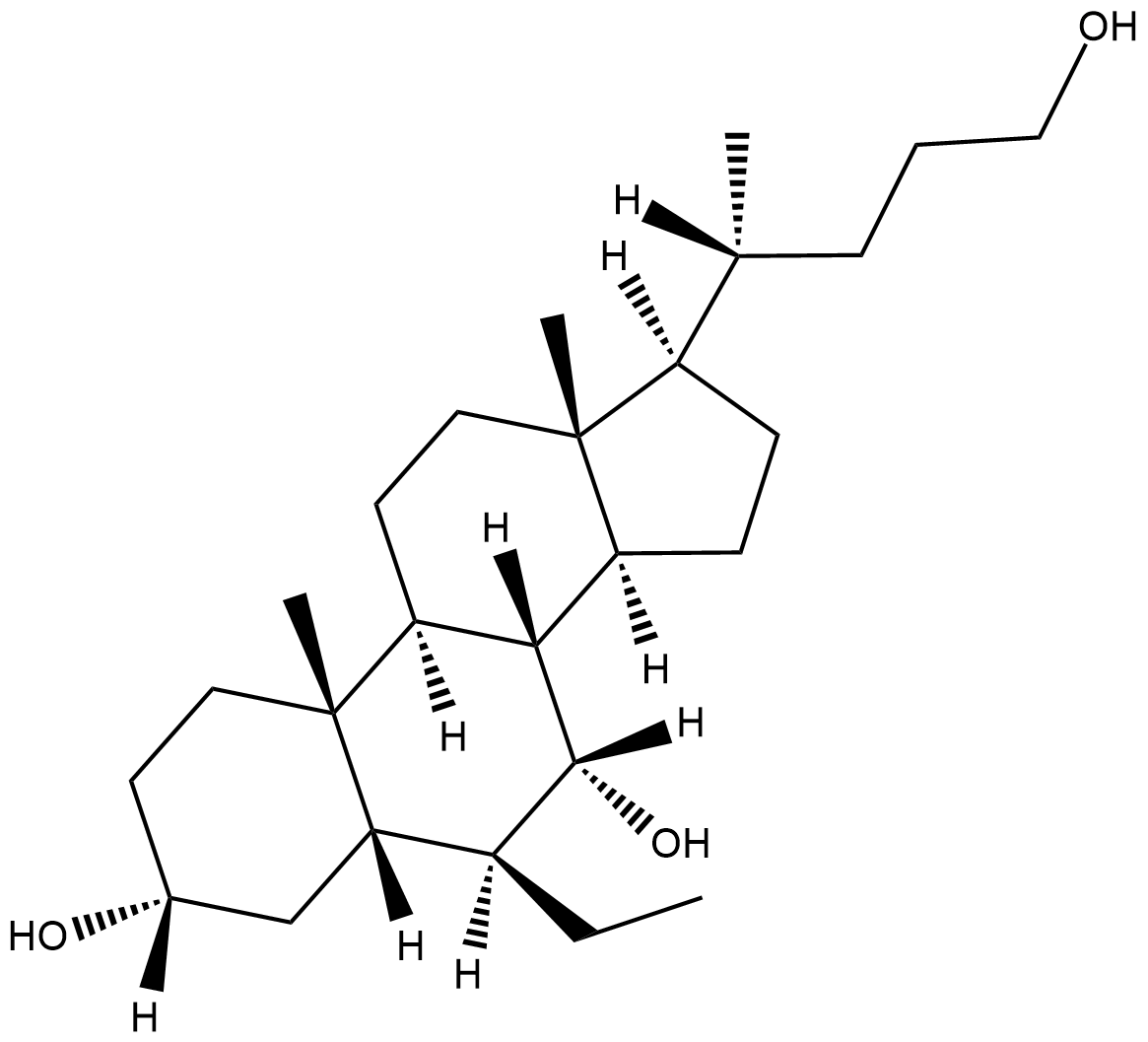
-
GC66331
Basiliximab
Basiliximab (CHI 621) is a recombinant chimeric murine/human IgG1 monoclonal anti-interleukin-2 receptor antibody. Basiliximab can be used for the research of renal transplantation.

-
GC52476
Bax Inhibitor Peptide V5 (trifluoroacetate salt)
A Bax inhibitor
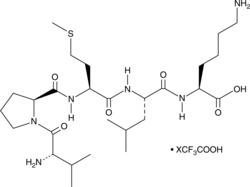
-
GC10345
Bay 11-7085
NK-κB activation inhibitor
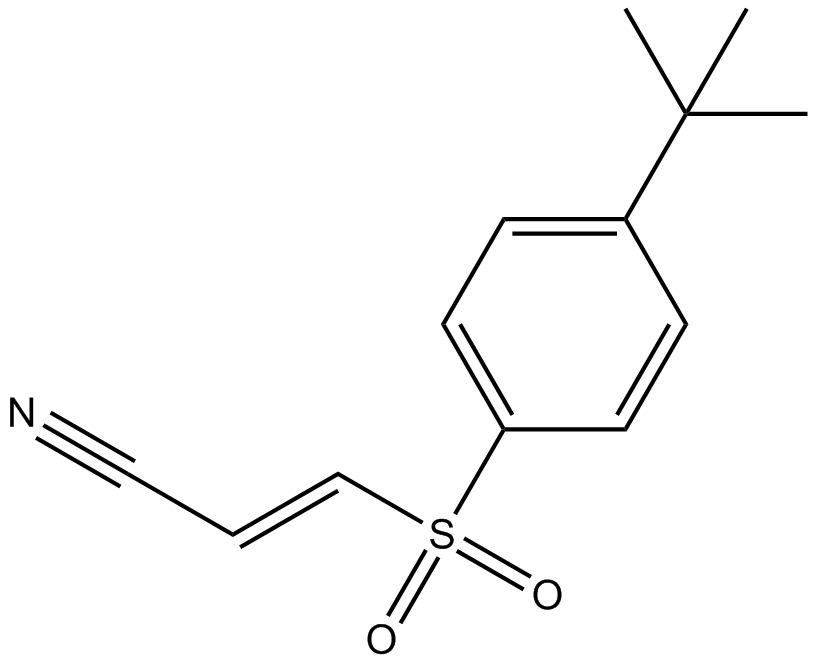
-
GC13035
Bay 11-7821
A selective and irreversible NF-κB inhibitor
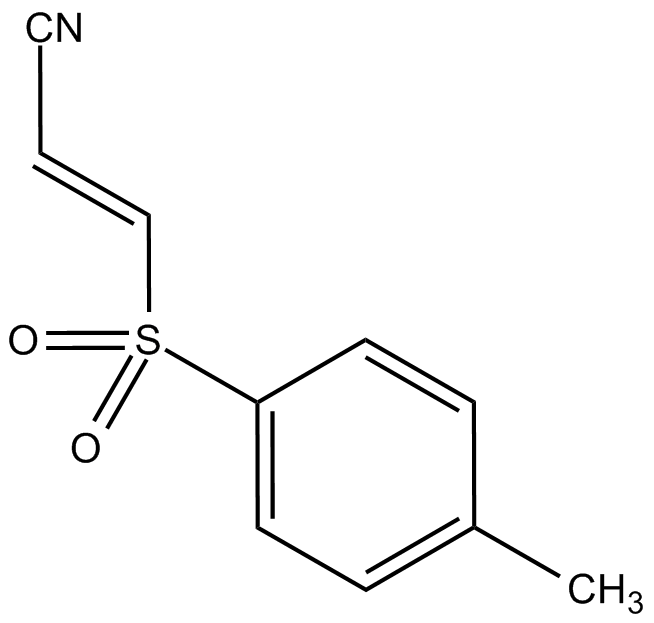
-
GC42897
BAY 61-3606 (hydrochloride)
BAY 61-3606 is a cell-permeable, reversible inhibitor of spleen tyrosine kinase (Syk; Ki = 7.5 nM; IC50 = 10 nM).
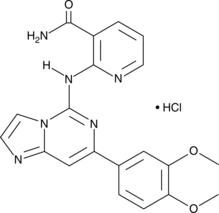
-
GC35474
Bay 65-1942 free base
Bay 65-1942 free base is an ATP-competitive and selective IKKβ inhibitor.
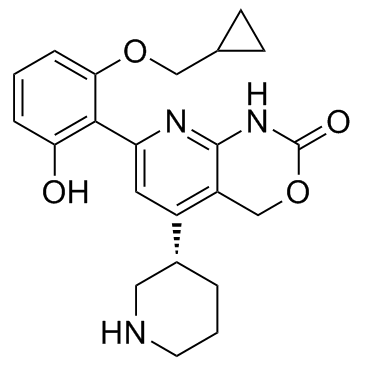
-
GC16303
Bay 65-1942 HCl salt
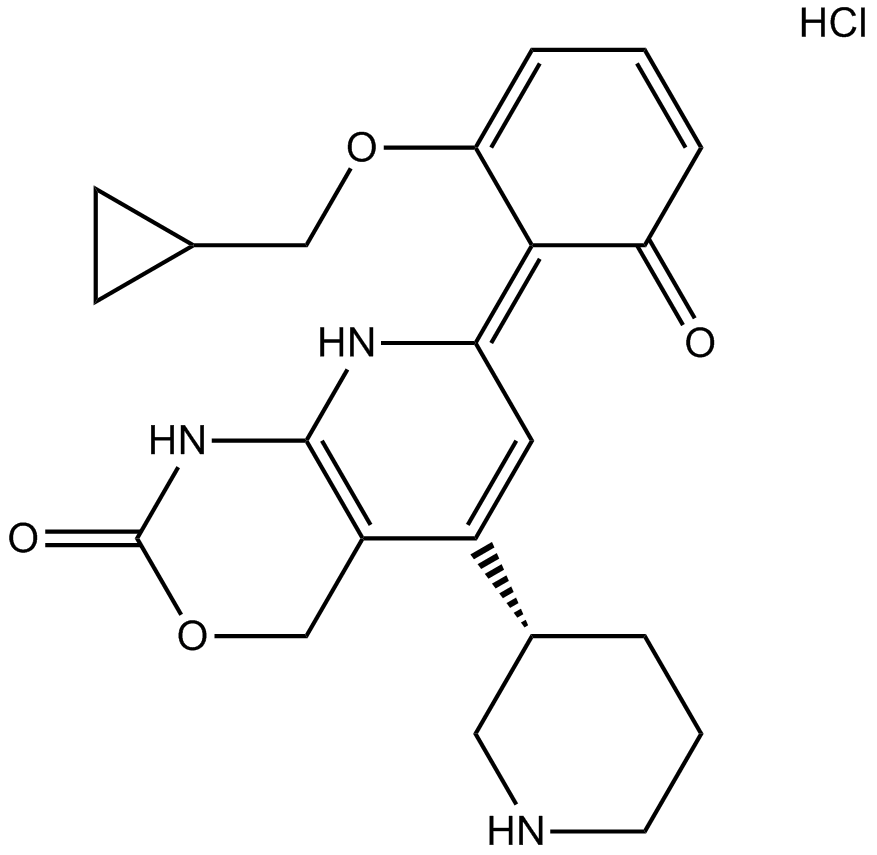
-
GC35475
Bay 65-1942 R form
Bay 65-1942 R form is the less active R-form of Bay 65-1942.
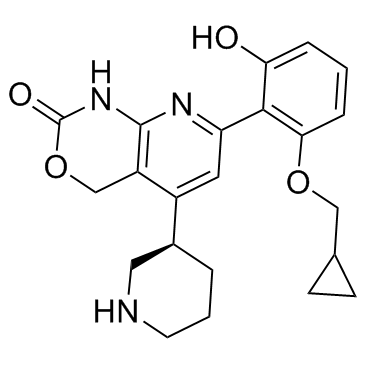
-
GC60624
BAY-985
A dual inhibitor of TBK1 and IKKε
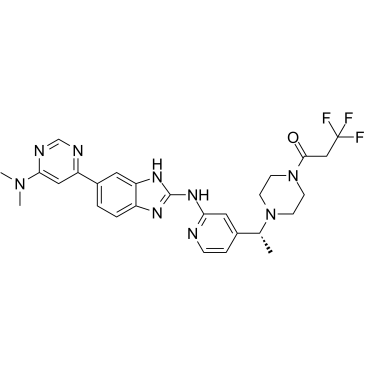
-
GC12232
BAY-X 1005
BAY-X 1005 (BAY X 1005; DG-031) is an orally active and selective 5-lipoxygenase activating protein (FLAP) inhibitor.
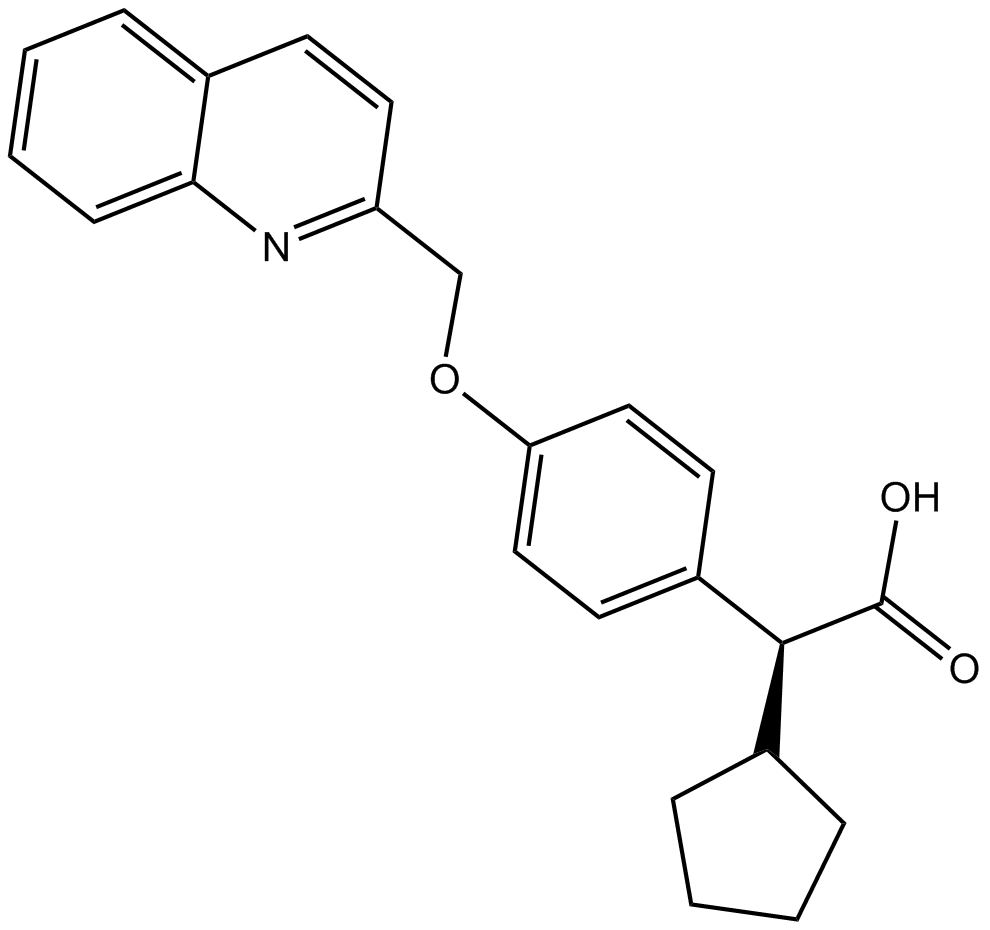
-
GC18487
BC-1215
BC-1215 is an inhibitor of F-box protein 3 (FBXO3; IC50 = 0.9 μg/mL for Il-1β release).
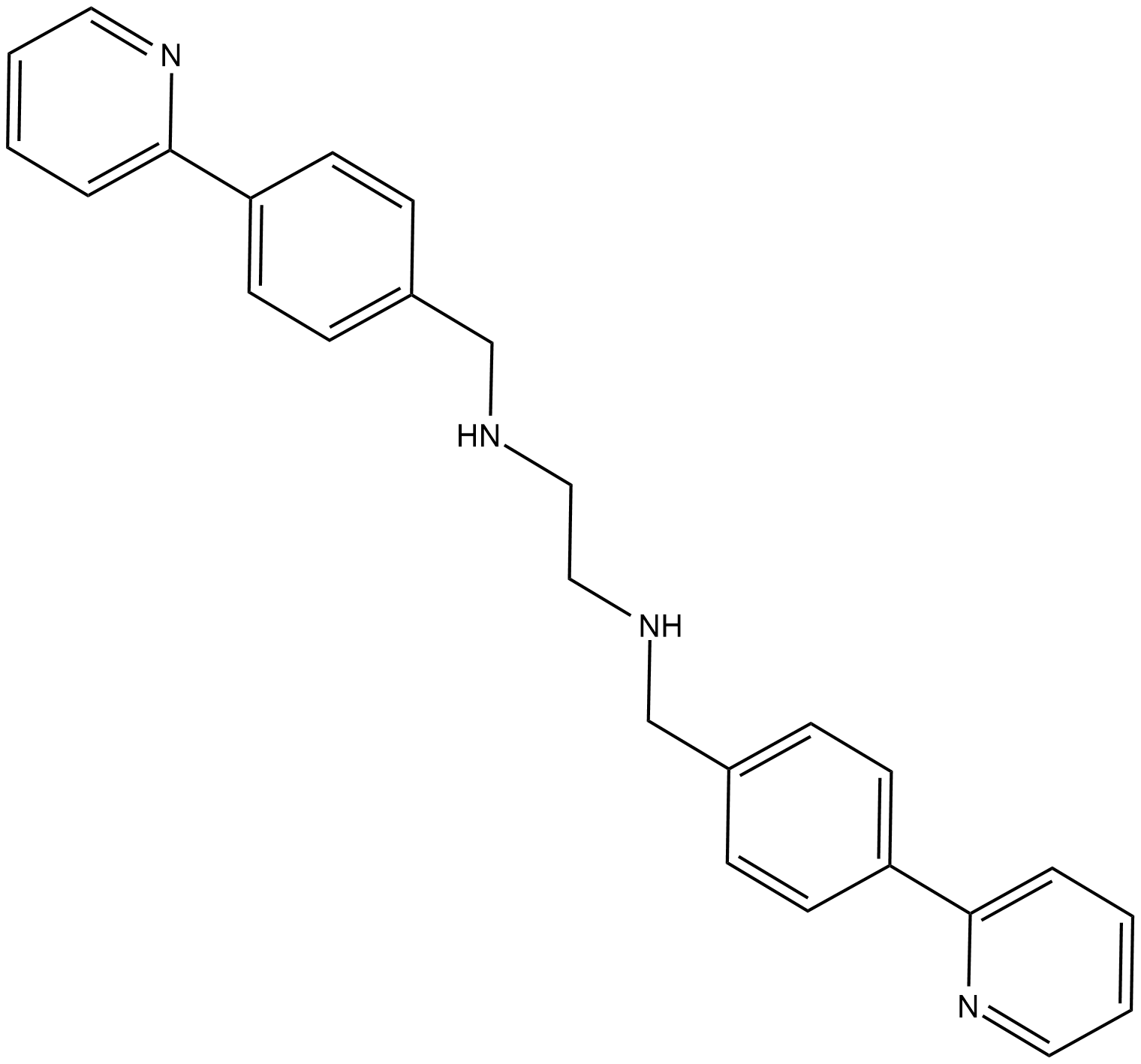
-
GC41583
BCN-E-BCN
BCN-E-BCN is a strained cycloalkyne probe for detecting proteins that have been sulfenylated, the first intermediate step in protein oxidation.

-
GC35481
BCX 1470
BCX 1470 inhibits the esterolytic activity of factor D (IC50=96 nM) and C1s (IC50=1.6 nM), 3.4- and 200-fold better, respectively, than that of trypsin.
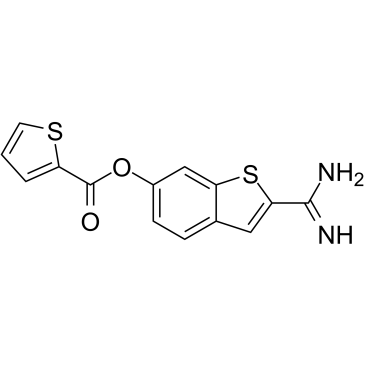
-
GC35482
BCX 1470 methanesulfonate
BCX 1470 methanesulfonate inhibits the esterolytic activity of factor D (IC50=96 nM) and C1s (IC50=1.6 nM), 3.4- and 200-fold better, respectively, than that of trypsin.
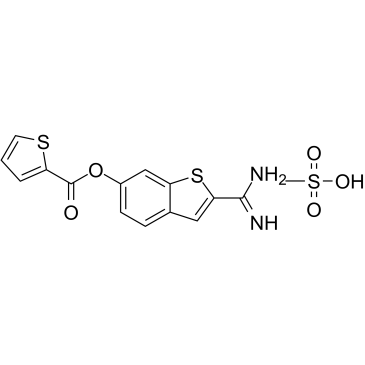
-
GC46908
BE-24566B
A fungal metabolite
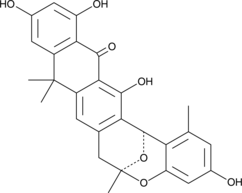
-
GC46910
Beauvericin A
A cyclodepsipeptide with diverse biological activities
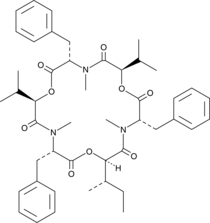
-
GC49038
Benanomicin A
A microbial metabolite with antifungal, fungicidal, and antiviral activities
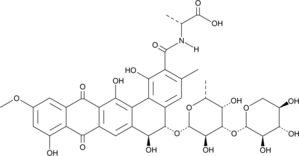
-
GC52468
Benanomicin B
A microbial metabolite with antifungal, fungicidal, and antiviral activities
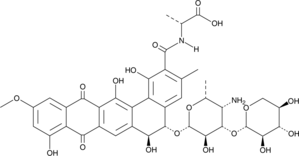
-
GC49040
Benanomicin B (formate)
A microbial metabolite with antifungal, fungicidal, and antiviral activities
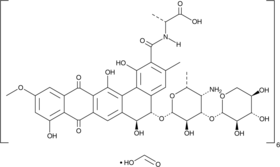
-
GC49042
Benastatin A
A bacterial metabolite with diverse biological activities
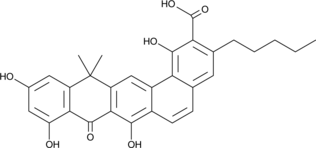
-
GC49043
Benastatin B
A bacterial metabolite with diverse biological activities
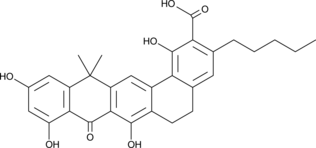
-
GC49044
Benastatin C
A bacterial metabolite with diverse biological activities
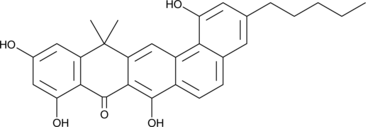
-
GC64354
Bendamustine
Bendamustine (SDX-105 free base), a purine analogue, is a DNA cross-linking agent. Bendamustine activates DNA-damage stress response and apoptosis. Bendamustine has potent alkylating, anticancer and antimetabolite properties.
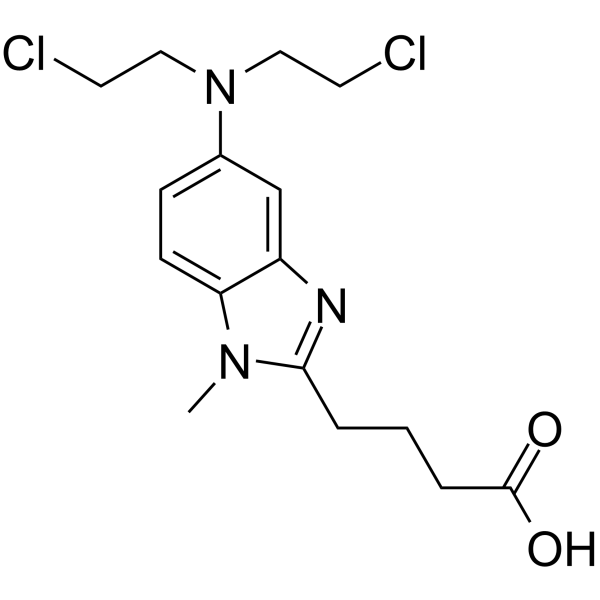
-
GC34046
Bendazol
Bendazol is a hypotensive drug which can also enhance NO synthase activity in renal glomeruli and collecting tubules.
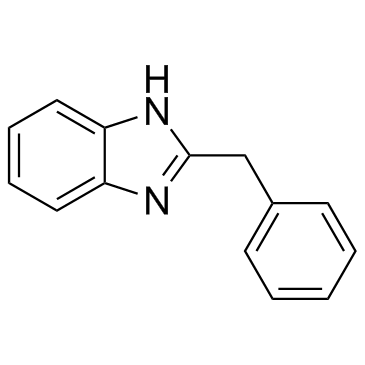
-
GC15949
Benfotiamine
A lipid-soluble form of vitamin B1
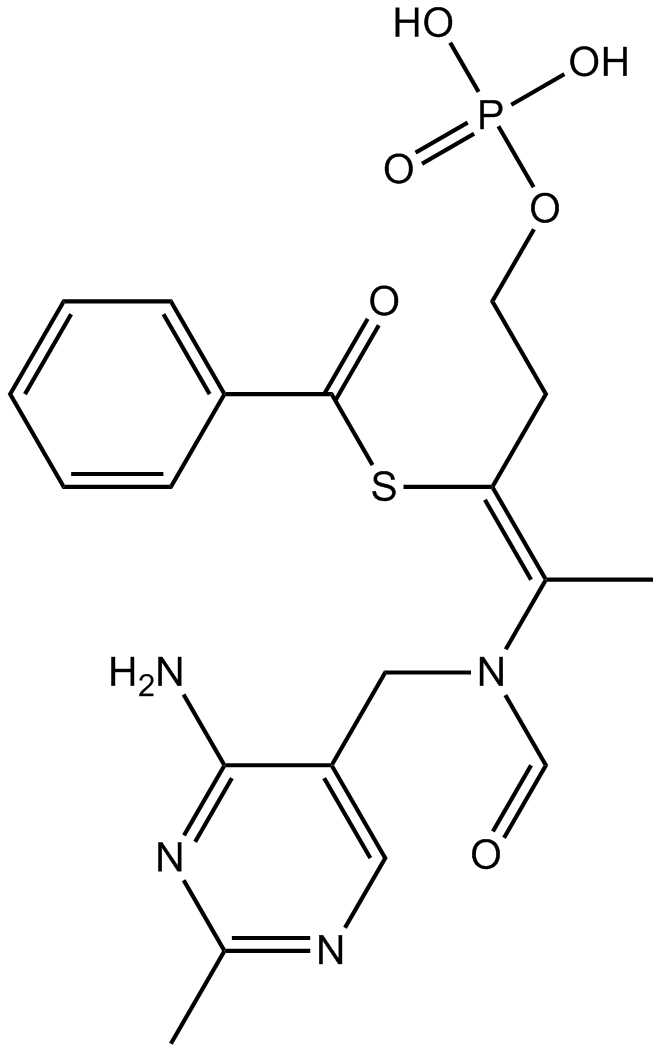
-
GC49836
Benoxaprofen
Benoxaprofen (LRCL 3794) is a potent and long-acting anti-inflammatory and antipyretic compound.

-
GC39346
Benralizumab
Benralizumab (MEDI-563) is an interleukin-5 receptor α (IL-5Rα)-directed cytolytic monoclonal antibody that induces direct, rapid and nearly complete depletion of eosinophils via enhanced antibody-dependent cell-mediated cytotoxicity.

-
GC35494
Benzoyloxypaeoniflorin
Benzoyloxypaeoniflorin, isolated from the root of Paeonia suffruticosa, is a tyrosinase inhibitor against mushroom tyrosinase with IC50 of 0.453 mM.
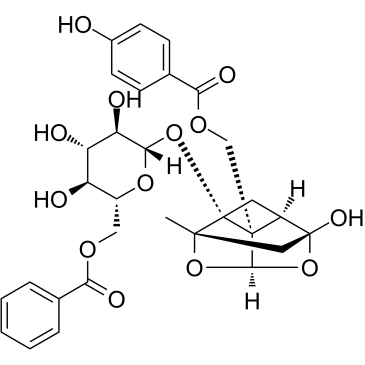
-
GC15058
Benzydamine HCl
Benzydamine HCl is a locally-acting nonsteroidal anti-inflammatory drug with local anaesthetic and analgesic properties; selectively binds to prostaglandin synthetase and has notable in vitro antibacterial activity.
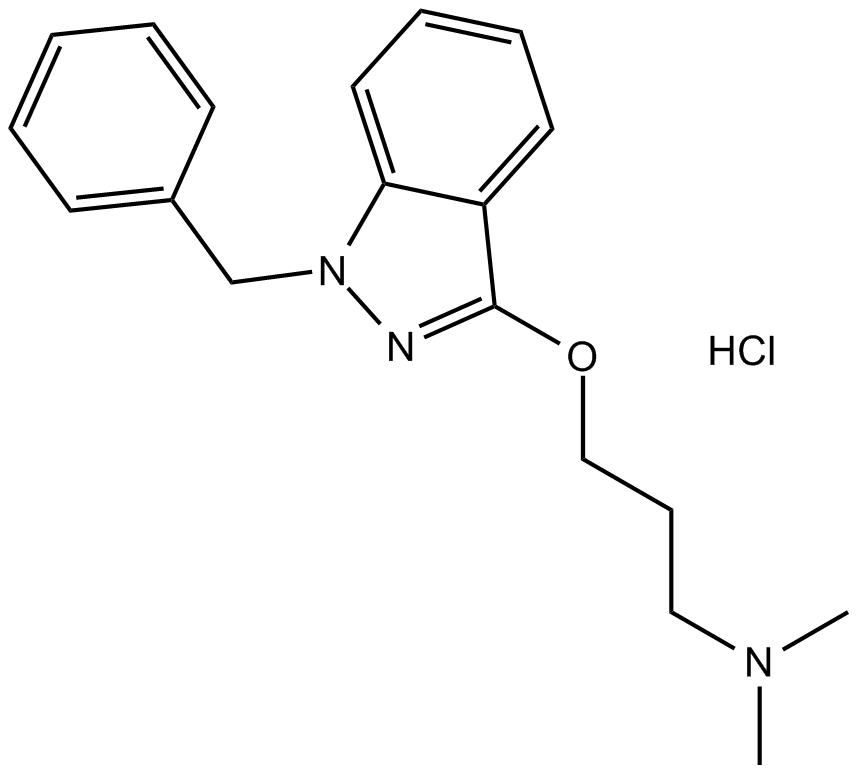
-
GC60636
Benzyl butyl phthalate
Benzyl butyl phthalate, a member of phthalic acid esters (PAEs), can trigger the migration and invasion of hemangioma (HA) cells via upregulation of Zeb1. Benzyl butyl phthalate activates aryl hydrocarbon receptor (AhR) in breast cancer cells to stimulate SPHK1/S1P/S1PR3 signaling and enhances formation of metastasis-initiating breast cancer stem cells (BCSCs).

-
GN10443
Berbamine
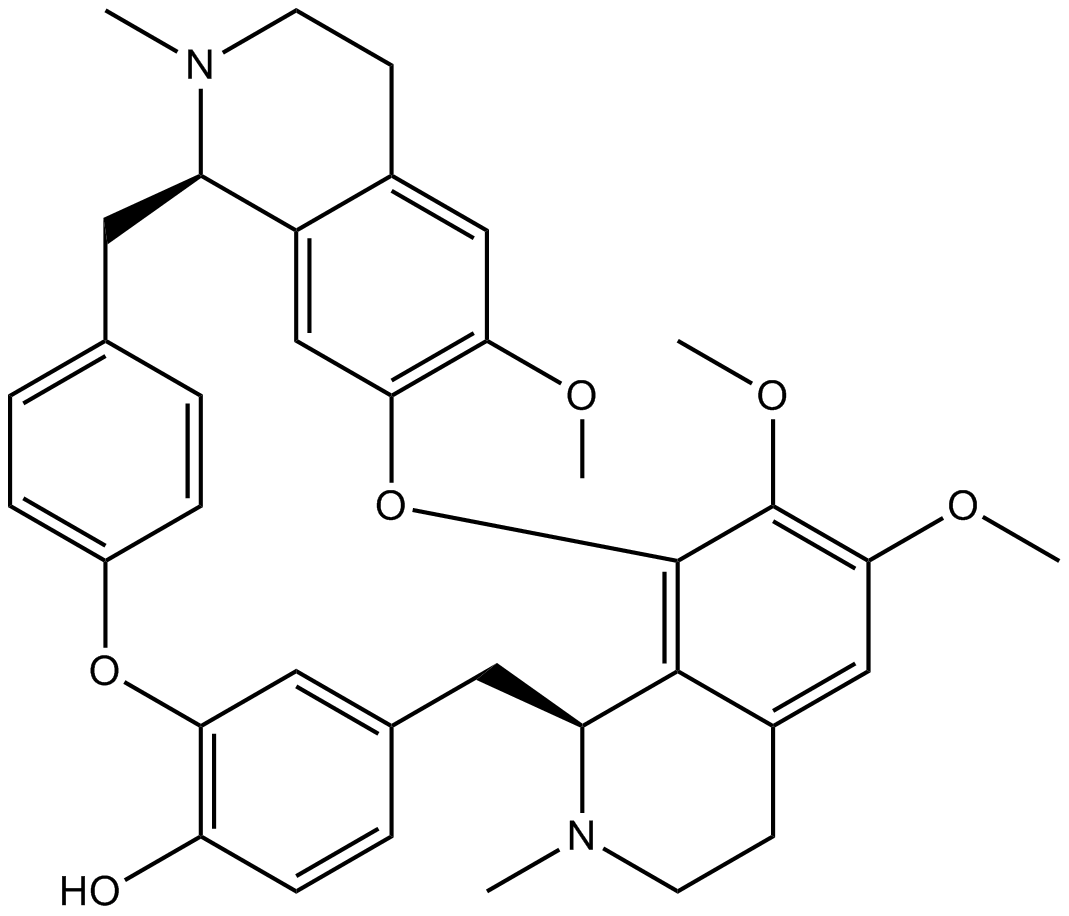
-
GN10358
Berbamine hydrochloride
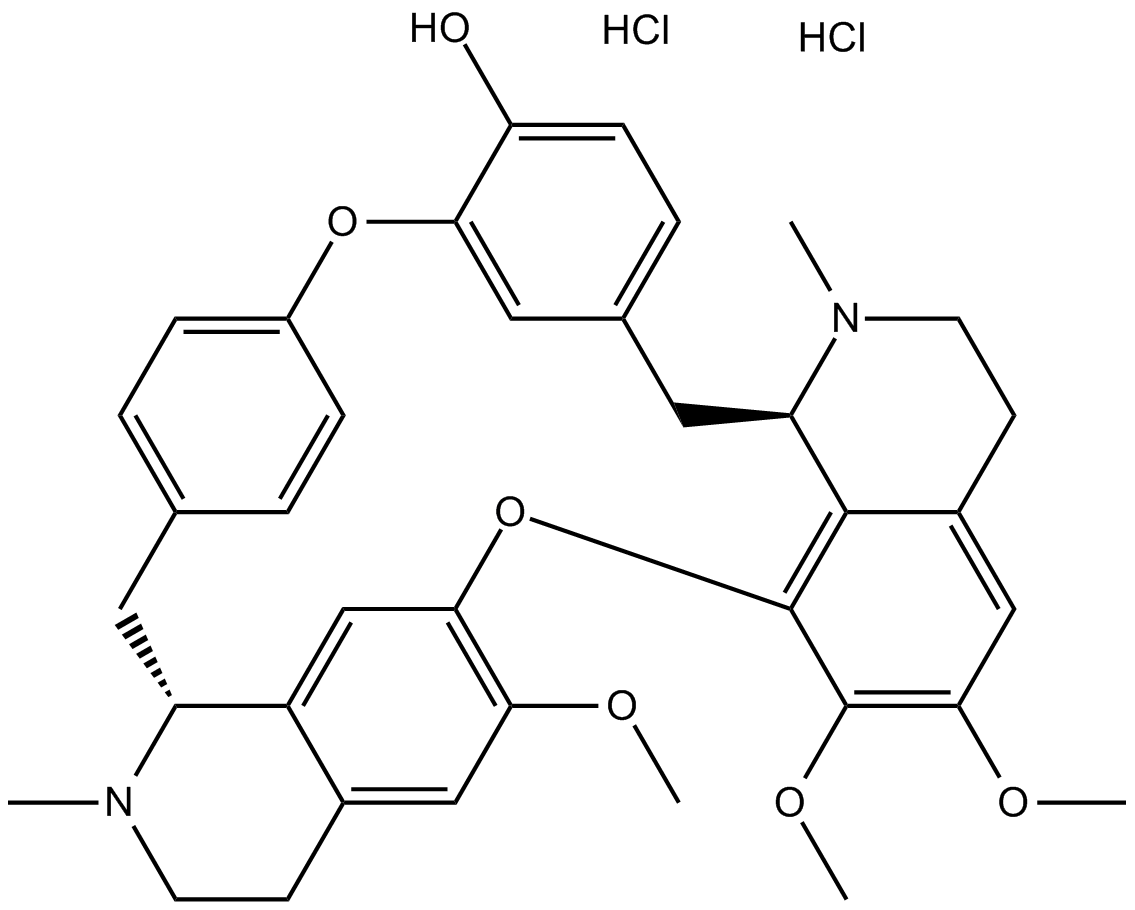
-
GN10221
Berberine
Berberine (Natural Yellow 18) is an alkaloid isolated from the Chinese herbal medicine Huanglian, as an antibiotic. Berberine (Natural Yellow 18) induces reactive oxygen species (ROS) generation and inhibits DNA topoisomerase.
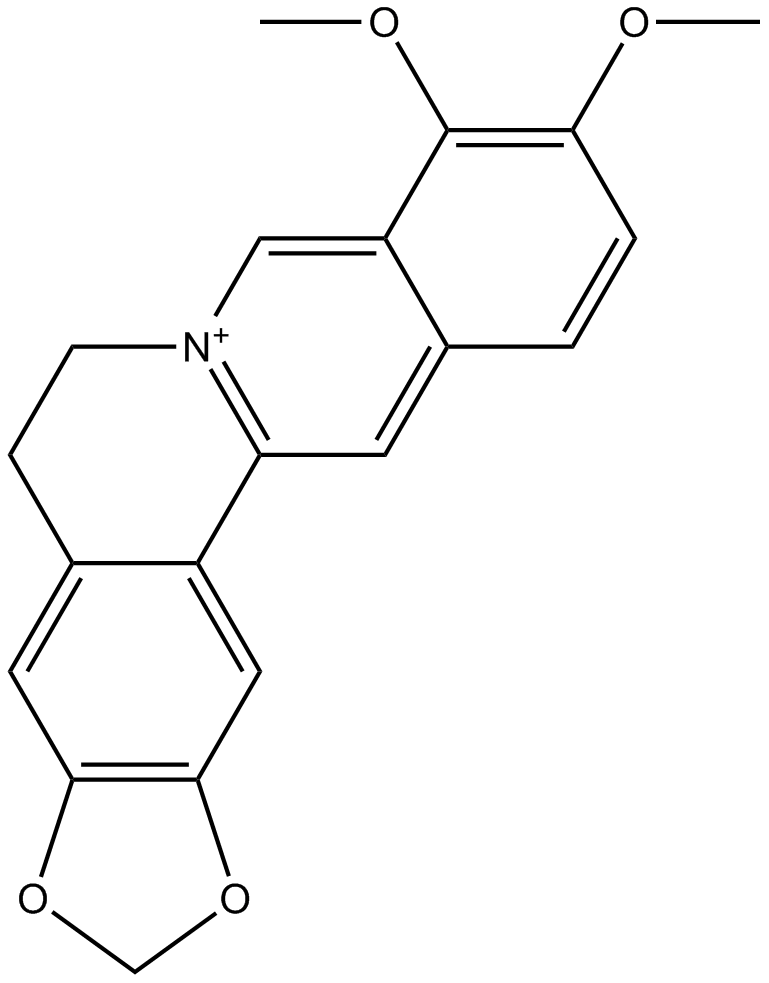
-
GC35497
Berberine chloride hydrate
Berberine chloride hydrate (Natural Yellow 18 chloride hydrate) is an alkaloid that acts as an antibiotic. Berberine chloride hydrate induces reactive oxygen species (ROS) generation and inhibits DNA topoisomerase. Antineoplastic properties.
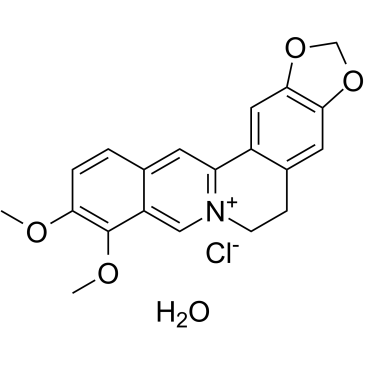
-
GN10208
Berberine hydrochloride
Berberine hydrochloride is an isoquinoline alkaloid derived from the Ranunculaceae medicinal plant Coptis chinensis. It has various pharmacological activities such as anti-tumor, anti-inflammatory, and hypoglycemic activities.
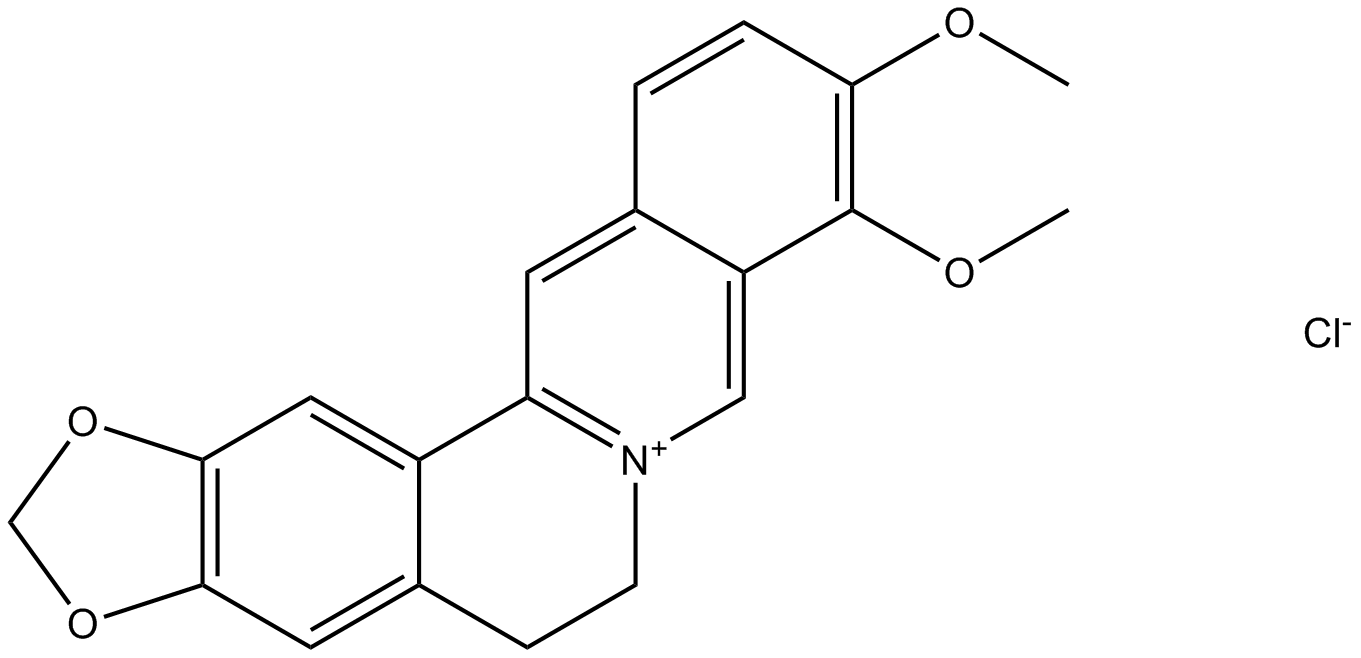
-
GN10523
Berberine Sulfate
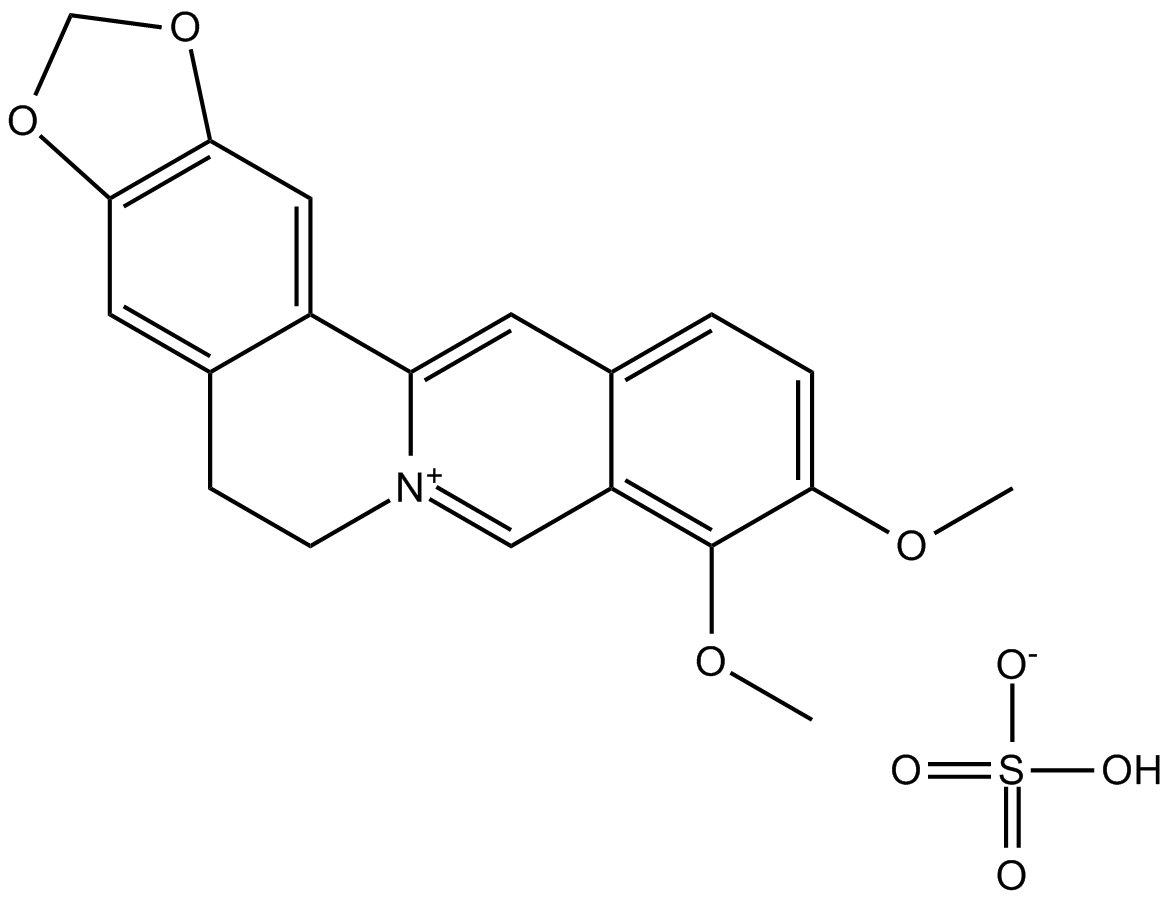
-
GC49387
Berberine-d6 (chloride)
An internal standard for the quantification of berberine
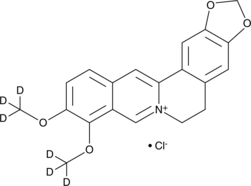
-
GC46098
Berkeleylactone E
A macrolide antibiotic
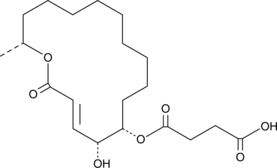
-
GC42925
Berteroin
Berteroin is a sulforaphane analog found in cruciferous vegetables including Chinese cabbage, rucola salad leaves, and mustard oil.

-
GC46922
Betamethasone 21-phosphate (sodium salt hydrate)
A synthetic glucocorticoid
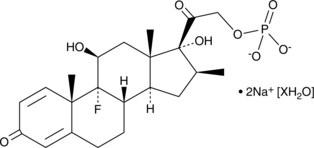
-
GC52329
Betamethasone-d5
An internal standard for the quantification of betamethasone
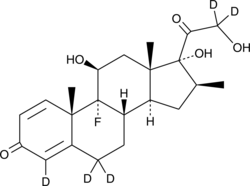
-
GC10480
Betulinic acid
A plant triterpenoid similar to bile acids
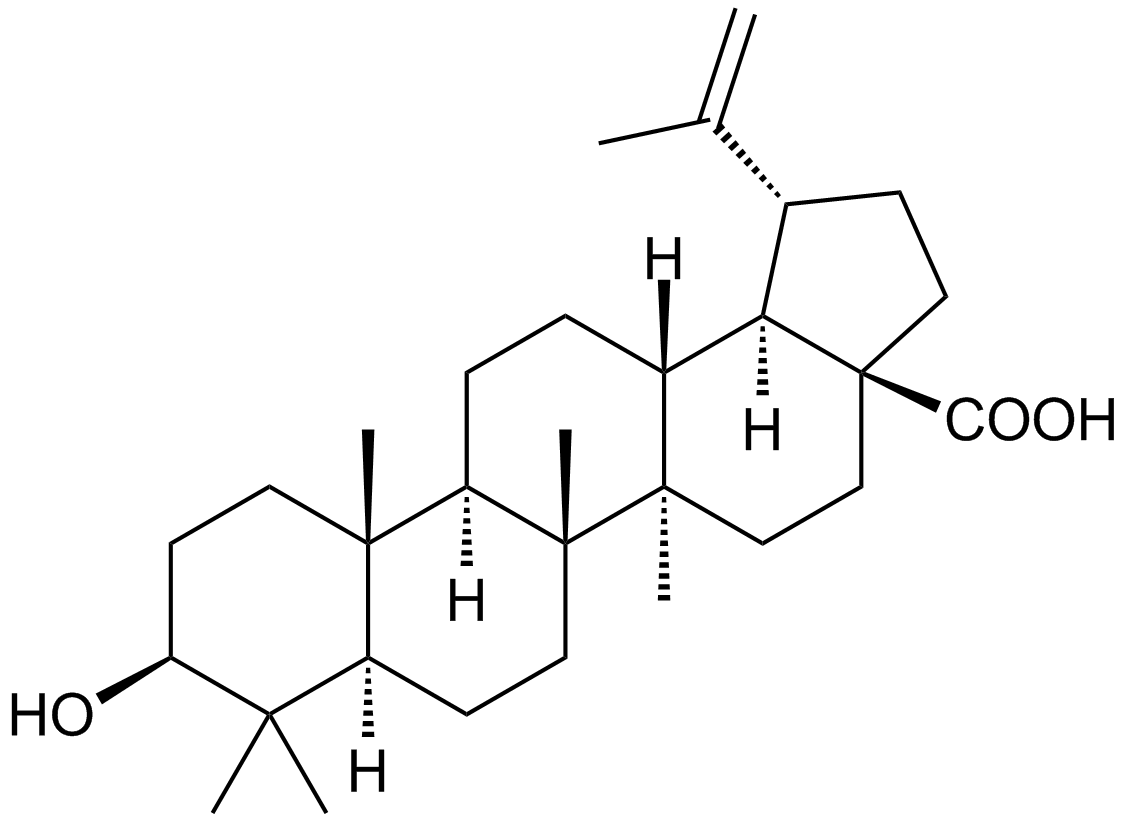
-
GC48504
Betulinic Aldehyde oxime
A derivative of betulin
